KILOMETRE PROJECT
For this conceptual art exercise, I wanted to showcase a kilometre using an object that would show the effects of a kilometre (how it changes over that distance). I decided to use socks, in white so that the “effects” would show, and I asked my boyfriend to walk a kilometre in them, without shoes. We walked around my neighbourhood for exactly a kilometre. We walked on sidewalks, grass, the road, etc.
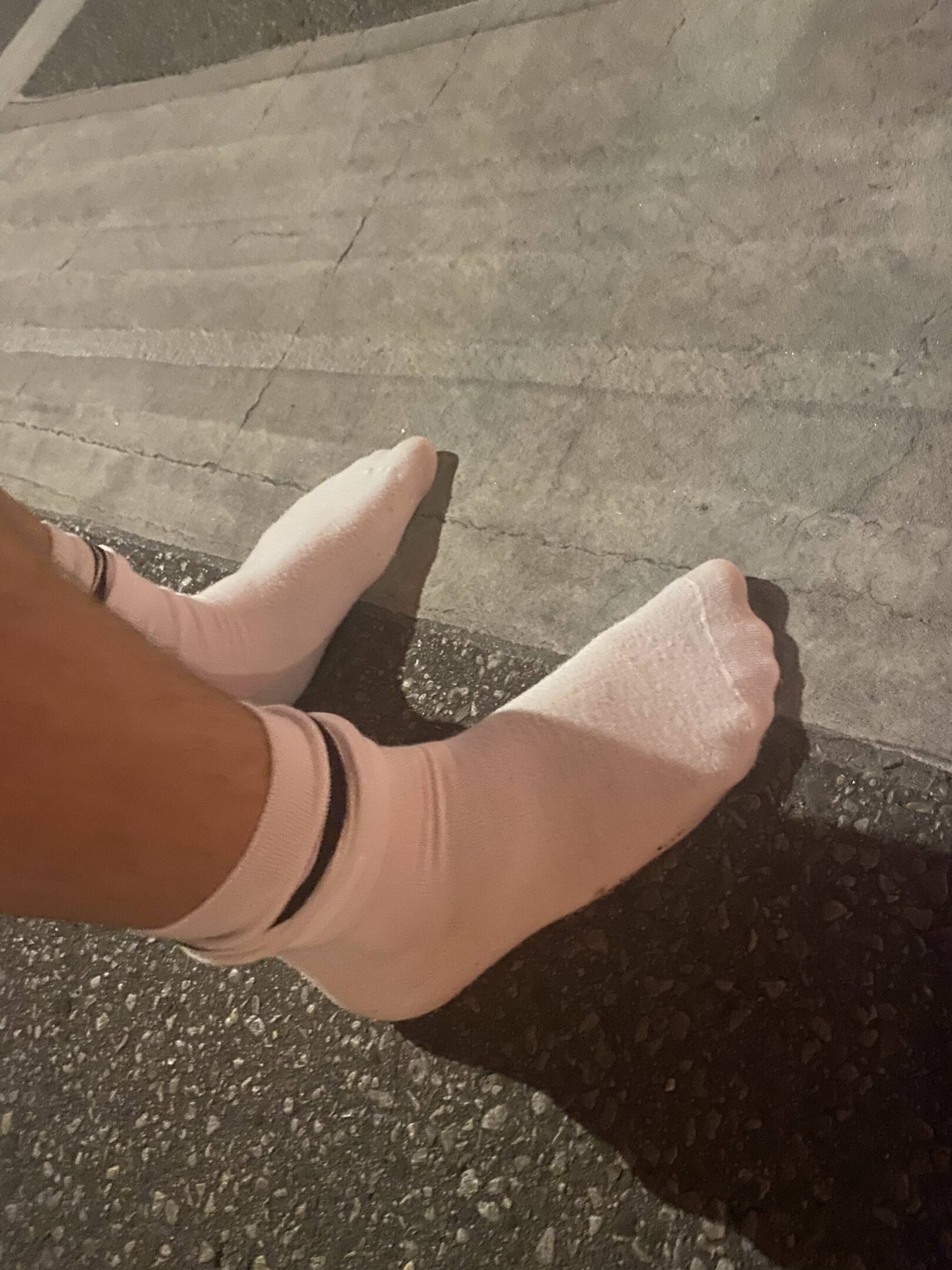
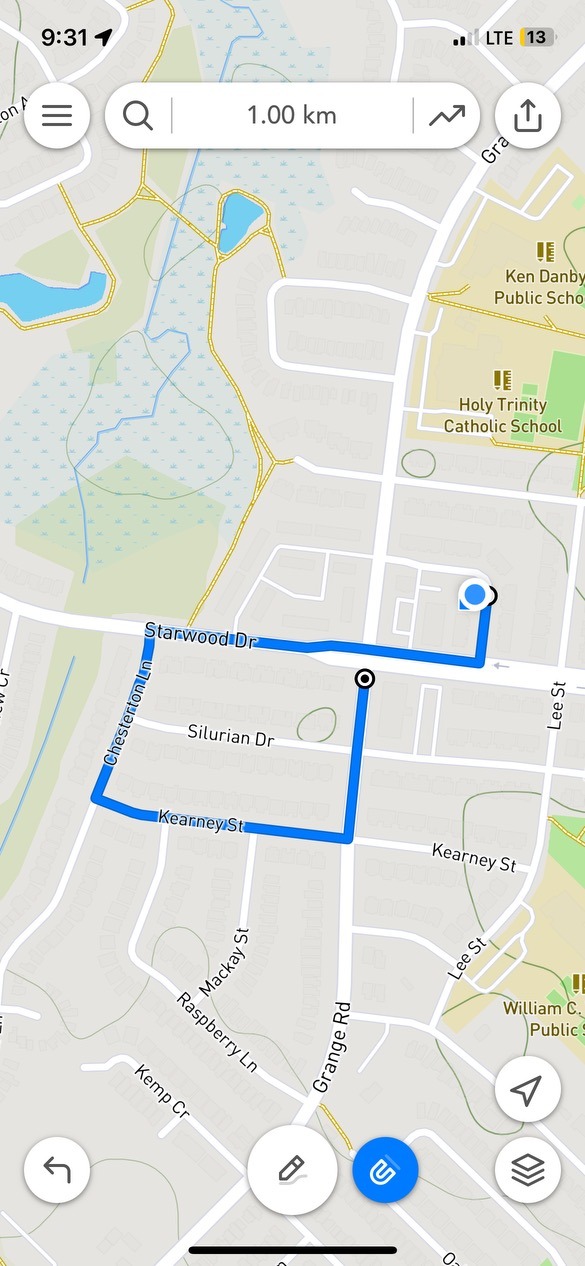
After walking a kilometre, we observed that the socks were no longer clean and white. They were dirty and worn down. There was even a hole in one. These socks were now a visual representation of 1 kilometre.
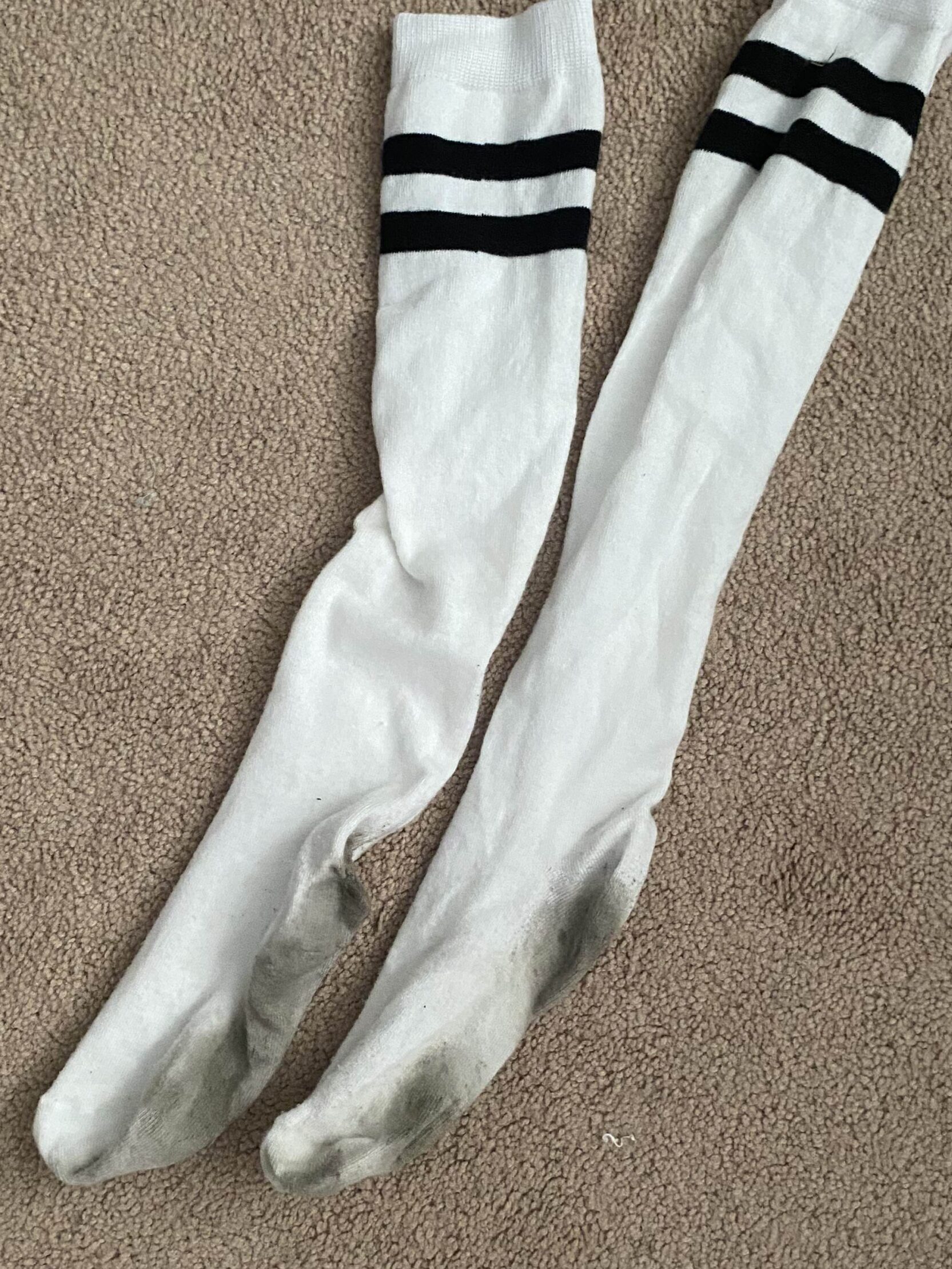

PIPILOTTI RIST
1. This is an image from “Worry Will Vanish,” which was on display at Hauser & Wirth in Savile Row, London in 2014. In the gallery, it was shown in a room where spectators would remove their shoes, and lie down on a carpeted floor under duvets. The video is displayed on two screens that span the entire height of the wall, accompanied by a calming soundtrack with zen music and sounds found in nature, created by Anders Guggisberg.
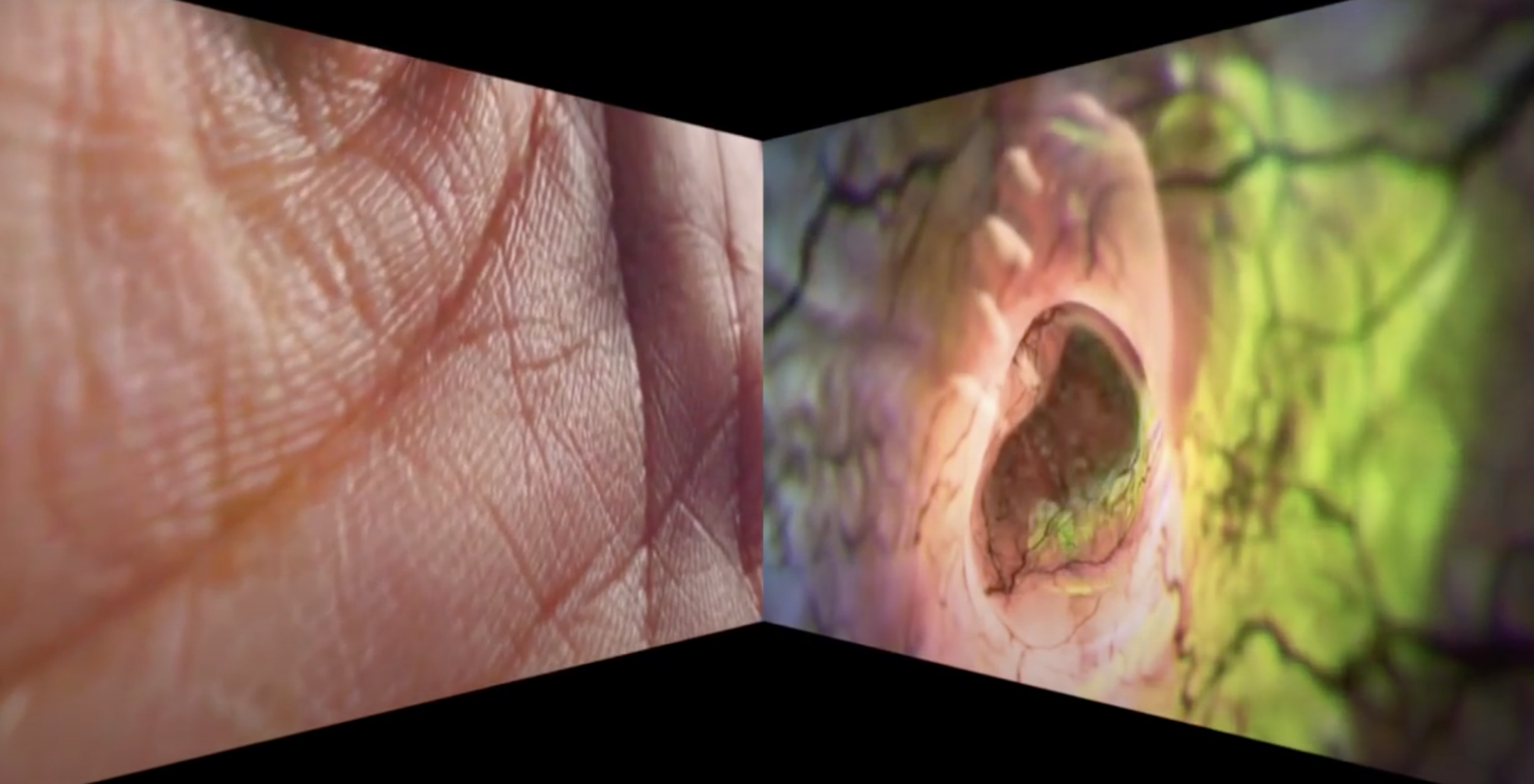
The video features vividly coloured moving images of various elements of nature such as medium shots of plants, close up shots of leaves, underwater videos, shots of bubbles, etc. Sunlight seems to filter through each of these elements, as they fade into each other, or are even displayed like a kaleidoscope. Hands and full figures are shown as well, including very close up shots of skin texture. Videos of what looks like a journey inside of a vein or organ fade into nature clips that usually have similar visuals to one another (ex. veins inside an artery look like the patterns of branches of the plants that are shown). The images are constantly moving, the bright colours are always changing, creating a visually stunning and intriguing piece.
The title of this work fits it very well, as the calming music and soothing visuals would definitely help someone’s worries to vanish. This work really forces you to pay close attention to your senses, to notice details about things that you might not have noticed before about nature or the body. This can almost be related to grounding techniques used for anxiety, such as the 5-4-3-2-1 method where you point out things you can see, feel, hear, smell, and taste, corresponding to the numbers. This forces you to be present in the moment, and slows your breathing as well. Pipilotti Rist may have had this intention with her piece or maybe she just wants viewers to appreciate the little beauties in life, like small details in plants or on skin. She may have also wanted to point out the visual similarities between parts of the body and nature, connecting their beauty.
2. I think there are similarities to Rist’s video art and popular media today, such as the randomness of them, and the way that there isn’t often context to the pieces. Often TikToks are short and humorous because of their bizarre nature. They are both usually visually interesting and have some background noise or music. The topics and messages that Rist represents in her videos are also very relevant in today’s video culture. Feminism, body positivity, and sex positivity are major discourses in today’s world and modern media often showcases it. Sometimes the videos with these topics are more educational, with facts or experiences being shared, but there are also more artistic representations on TikTok or Youtube that may have the underlying message of one of these topics, but don’t necessarily say it out right, like Rist’s works.
I think that similarities can also be drawn to the way that people watch her videos and TikToks or Youtube videos. Rist’s pieces are usually displayed in rooms where the viewers are invited to sit or lay down on couches, pillows, chairs, beds, etc. This is also usually where people watch TikToks and Youtube videos.
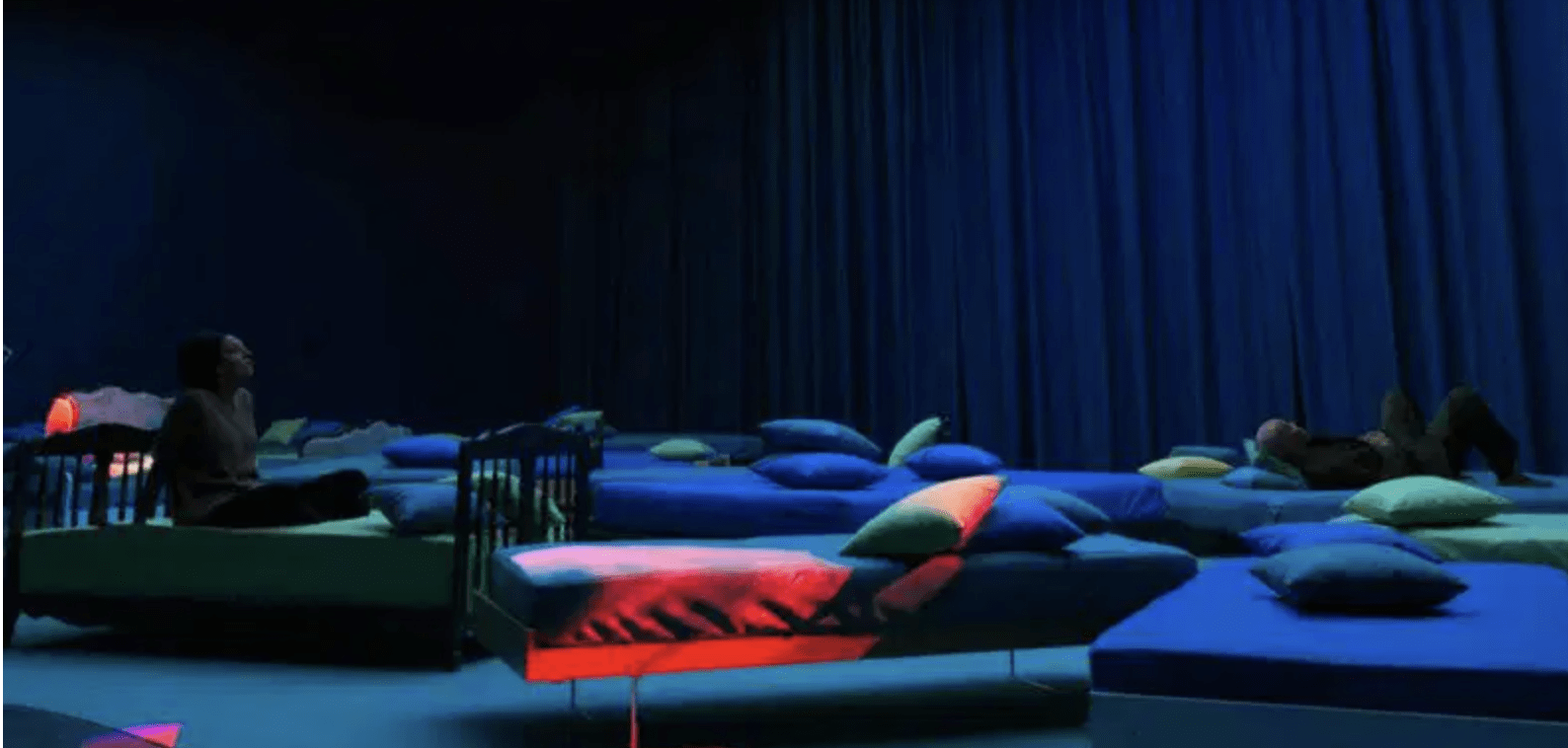
3. I went to a couple of classes with my shirt inside out on Thursday. At first I was pretty self conscious, worried that everyone was looking at me funny or that someone was going to say something and I would be embarrassed. But eventually my mind focused on other things like painting in class, writing notes on a lecture, walking around, etc and I wasn’t worried about it anymore. I was not treated differently, until I went home and my roommate pointed out that my shirt was on backwards. But even then, she was just trying to be helpful and not judgemental or rude. I think this could be considered a performance, or even a “happening,” just without a traditional stage and audience in seats. There were still people observing my “performance,” but I was just the only one who knew it was one. It could even be argued that everything we do is a “performance,” because we are always thinking about (even subconsciously) how we are presenting ourselves to people, what message we are sending etc. In addition, in the assigned article, Pipilotti Rist says “The whole question of how to put art into regular life is what interests me the most,” which I think could relate to this experiment because this “performance” is bringing art into everyday life, as it is on display throughout daily normal tasks and events.
TORONTO ART TRIP
PIECE #1: The Other Home, Hangama Amiri
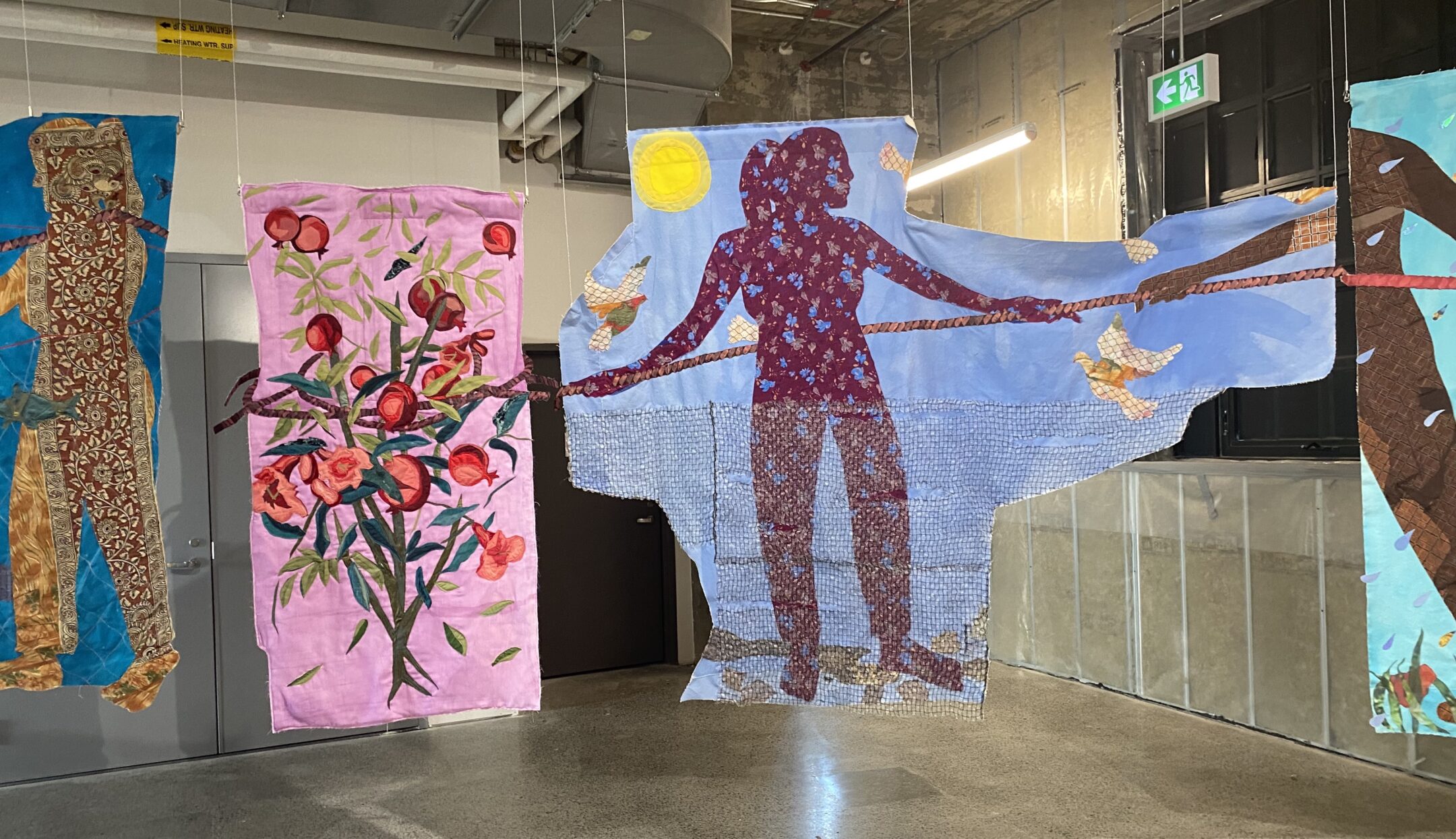
This piece, from the Toronto Biennial of Art, really caught my eye with its large presence, bright colours, and textural feel. After learning about it from the guide and the description, I loved it even more. The different quilt like pieces are hung in a curved line. Each one has a variety of fabrics and depicts images of people and plants, all connected by a rope. These pieces symbolize the different emotions that come along with the aspects of migration such as homelessness and forming new social bonds. Hagama Amirir herself was a refugee from Afghanistan, so these concepts are very personal. I really like the materials used for this piece, and it brings up feelings of home, comfort, and family. I think this type of work is really important because often the stories about refugees in the media only focus on the conditions of the place they came from, and how their new country has welcomed them. But of course the experience for the refugees doesn’t stop there. There are struggles finding housing, employment, and a sense of belonging, stories which deserve to be told such as through art pieces like this.
PIECE #2: Mouse Museum (Van Gogh Ear), Alex Da Corte
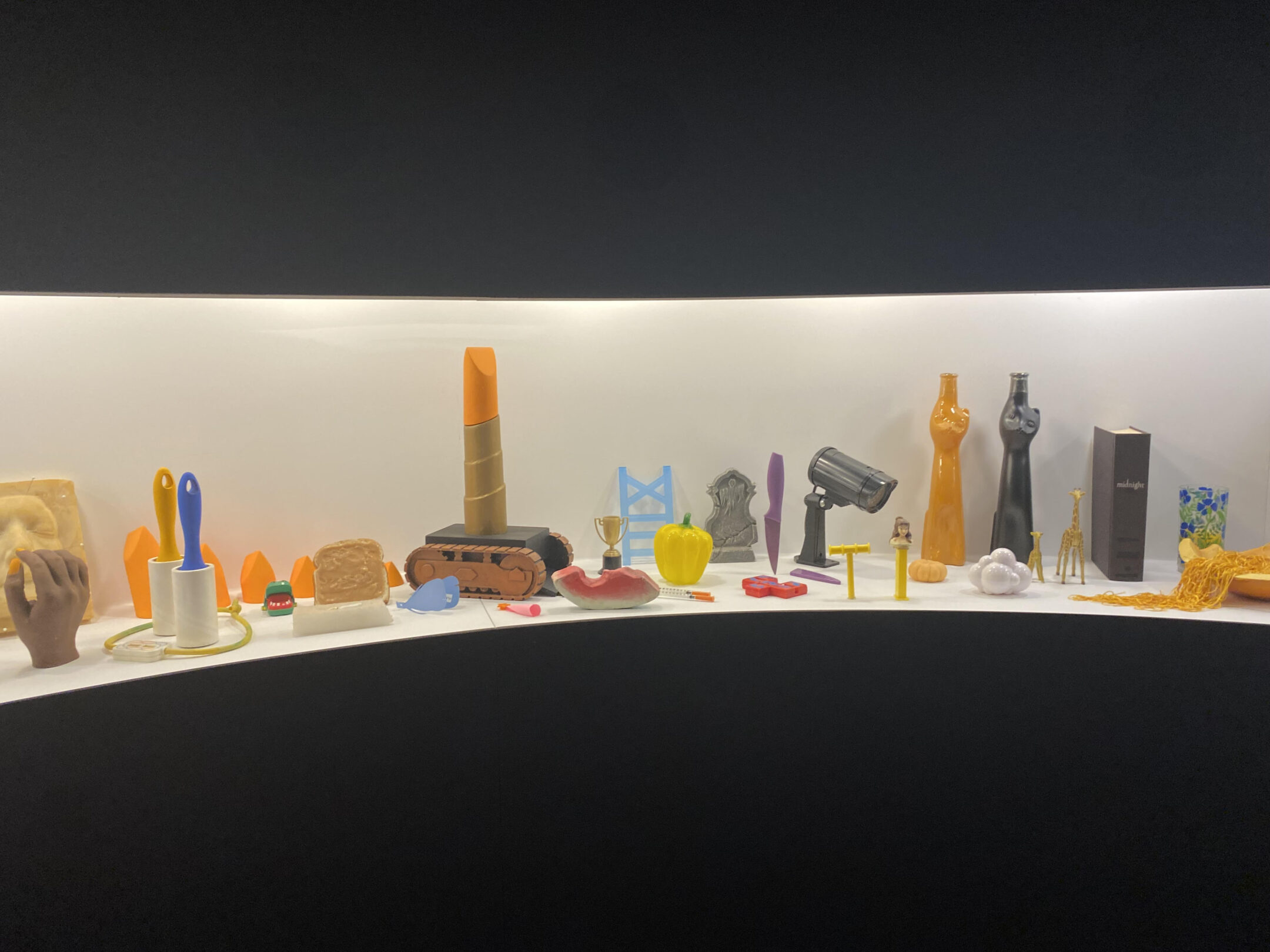
This piece, from the MOCA, is inside of a long, dark structure, is a room with a display case spanning it, showcasing random objects with odd juxtapositions. This is part of Alex Da Corte’s Ear Worm exhibit, which is a dreamlike surreal environment full of pop culture and weirdness. This piece caught my eye specifically because it felt very familiar and nostalgic but with a twist, which I think was the point. It has been described as “a look into Da Corte’s mind,” which I think is really cool because I often feel like this is what my own brain looks like. Lots and lots of random things and memories that collide and mix and create chaos or sometimes if I’m lucky, make an cool idea I can use.
VIDEO ART PROJECT
These three videos explore one feat three ways. Liv and I chose to depict the idea of watching yourself being watched through video technology. Various interpretations can be taken from these videos such as how people may feel insecure as if people are watching them in their everyday life, how technology can distort appearances and beauty, the spectrum of human reactions to being in the spotlight, or even possibly the dangers of technology when it comes to surveillance.
ONE SHOT – “The Observer and the Observed”
The first video is just one shot showing how someone can react to seeing themself being recorded and displayed. This forces the person to observe how the world sees them, or more accurately, how video technology captures them.
SEQUENCE – “Reflection of Humanity”
The second video is an edited sequence of multiple clips of different people observing themselves being displayed on many TVs in various sizes and from various angles. This shows how different people react to being “watched” and displayed. It can be fascinating to see the little gestures that people make, and the different responses.
LOOP – “Mirror Mirror On the Screen”
The last video is a loop of a video showing someone attempting to put makeup on their face while only looking at a TV displaying them from a different angle than a mirror would. You can see the different struggles and hesitations with this. This video is looped once. The loop could possibly symbolize the struggle for perfection in beauty.
AUDIO ASSIGNMENT
“Lost in the dryer”
For this audio piece, I originally had an idea to record my boyfriend snoring. But unfortunately, somehow, he did not snore every time I recorded him! So I had to quickly think on the spot and come up with a new concept. I thought about how you can often hear noises coming from the dryer from items left in pockets of clothing or the sound of metal zippers hitting the walls. I decided to exaggerate and play with that idea using other random or unexpected items to see how they might sound in the dryer.
CONCEPTUAL PORTRAIT
For this project, I decided to make a conceptual portrait of my dad or movies as a whole. Since 1996, my dad has saved every ticket from the movies he’s seen up until this year. Movies have always been a big part of his (and now my) life. They are definitely one of his obsessions and these tickets show a glimpse into what that looks like for him. He kindly lent me his box of tickets and I sorted through hundreds of tickets into the years 1996-2024. I then laid them out into grids on black paper for good contrast and took pictures for each year. I decided to display this as a slideshow but I think that a series of prints could also be really effective. These tickets say a lot about my dad like which movie theatres he went to, the genres he likes, how many movies he saw, and how all of those things change over time. An example of something I found inetresting was that unlike years around the same time, there are only a few tickets from 2005 because that’s the year I was born, and he was too busy taking care of me to see a lot of movies. This portrait also represents movies as a whole, showing how movie prices change and the different movies that came out each year. Even the format of the tickets vary through the years. There are only a few tickets from 2020 indicating when the COVID-19 lockdown was occurring.
I am very thankful that my dad lent me his tickets that mean so much to him, and I can’t wait to continue to make a collection of my own!
ARTIST’S BUTTONS
I decided to make my artists buttons feature vintage/retro price tags. Each button has a different price tag with different amounts and other words that go along with it. The concept of someone wearing a price tag can touch on the idea of someones worth, how artists can become commodified, etc. The other words on the price tags also add additional meanings such as “used” or “2 for 15 cents.” I chose retro looking price tags because they are more colourful and interesting than modern day ones. Some of the buttons have backgrounds to match people’s clothing (such as blue denim), to emphasize that the price tag is on the person, not the button.
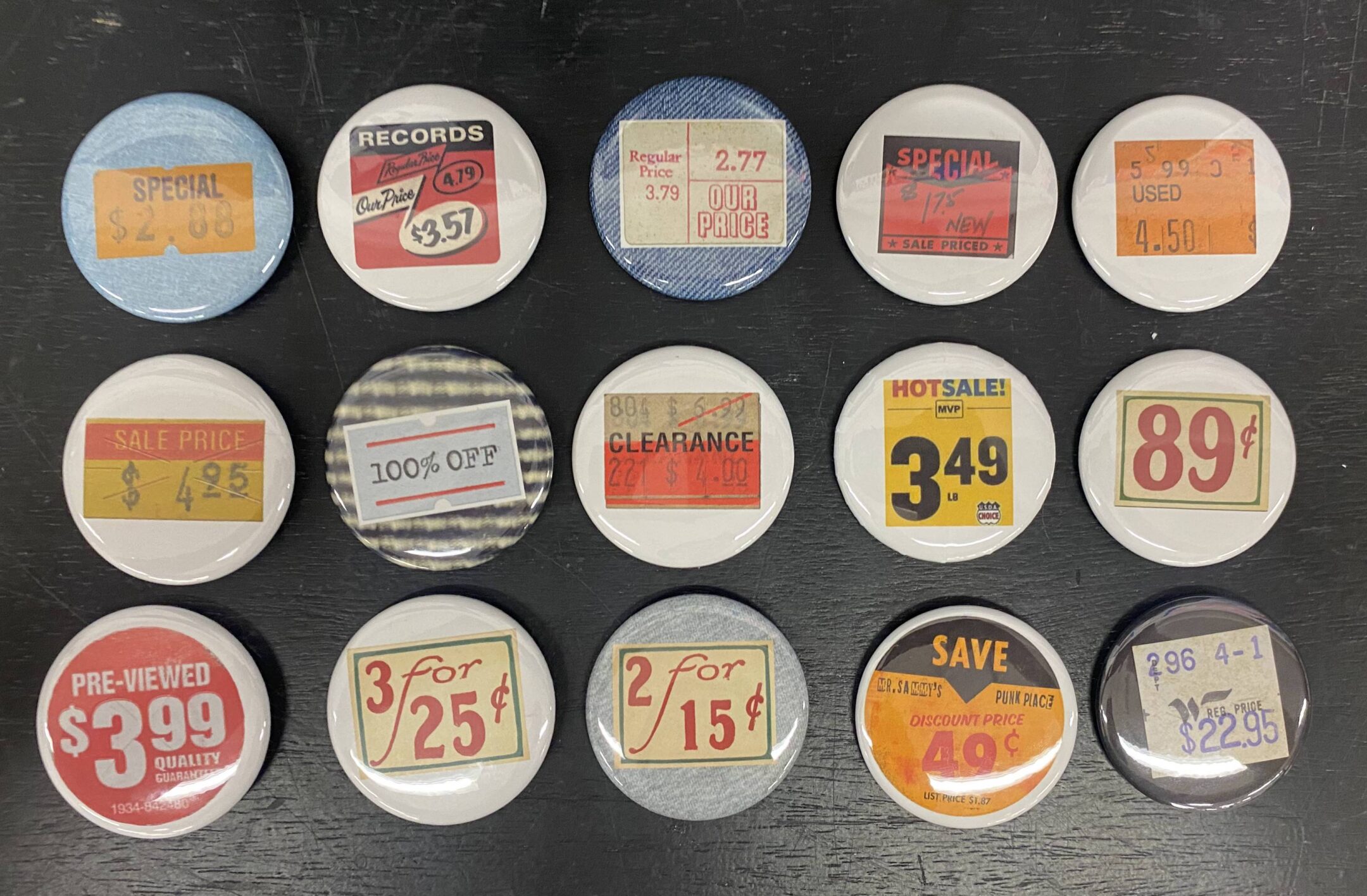
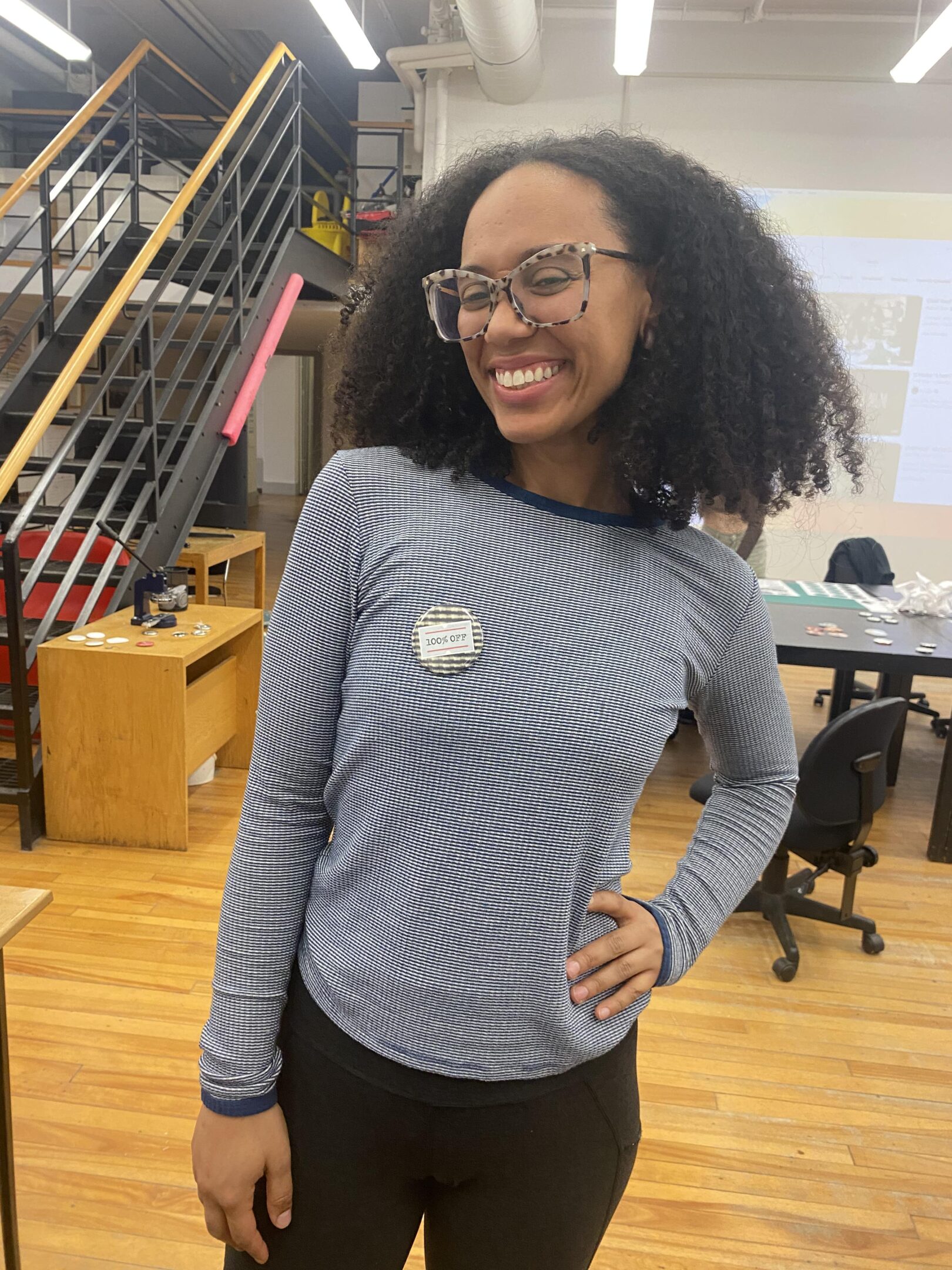
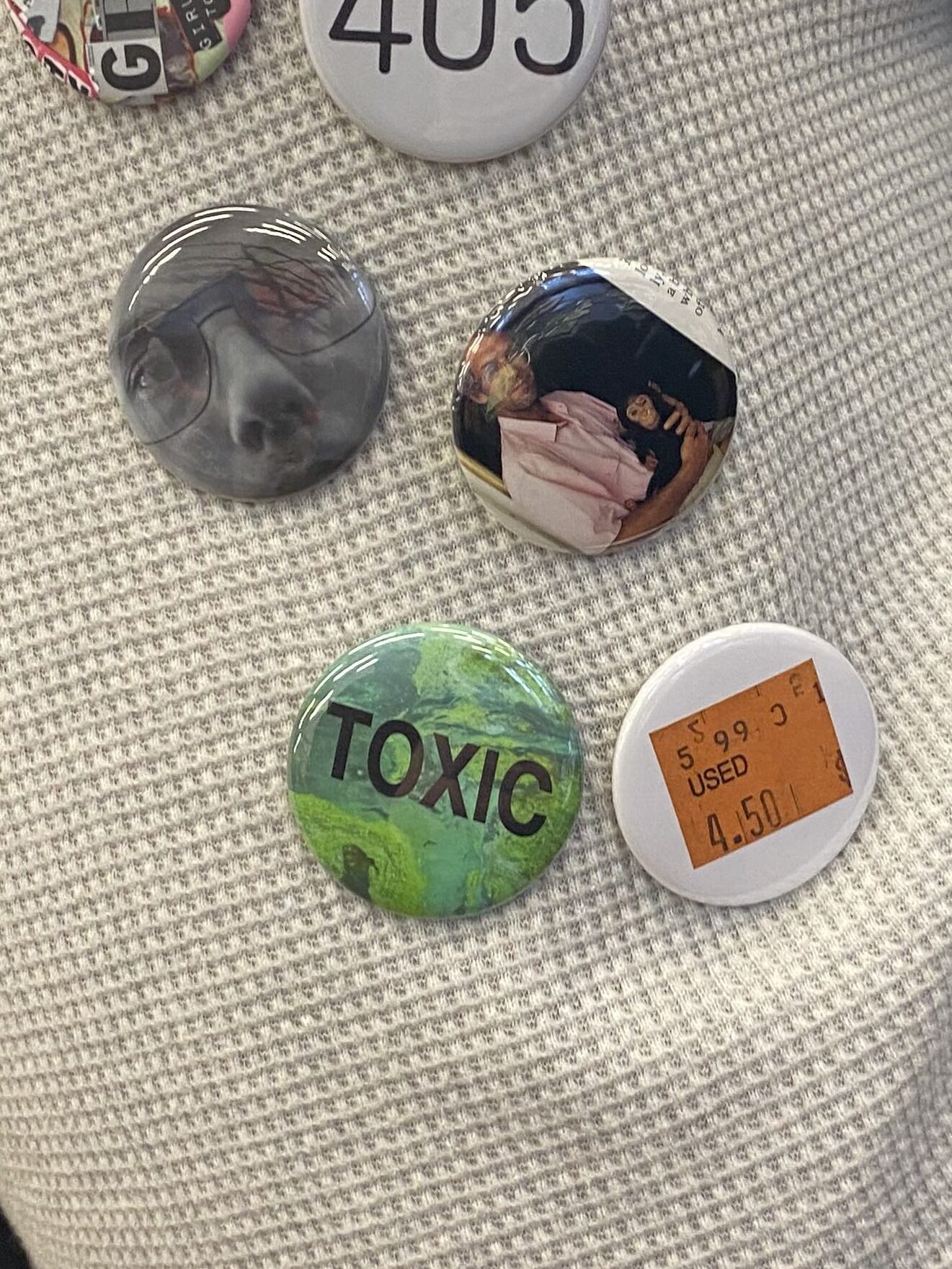
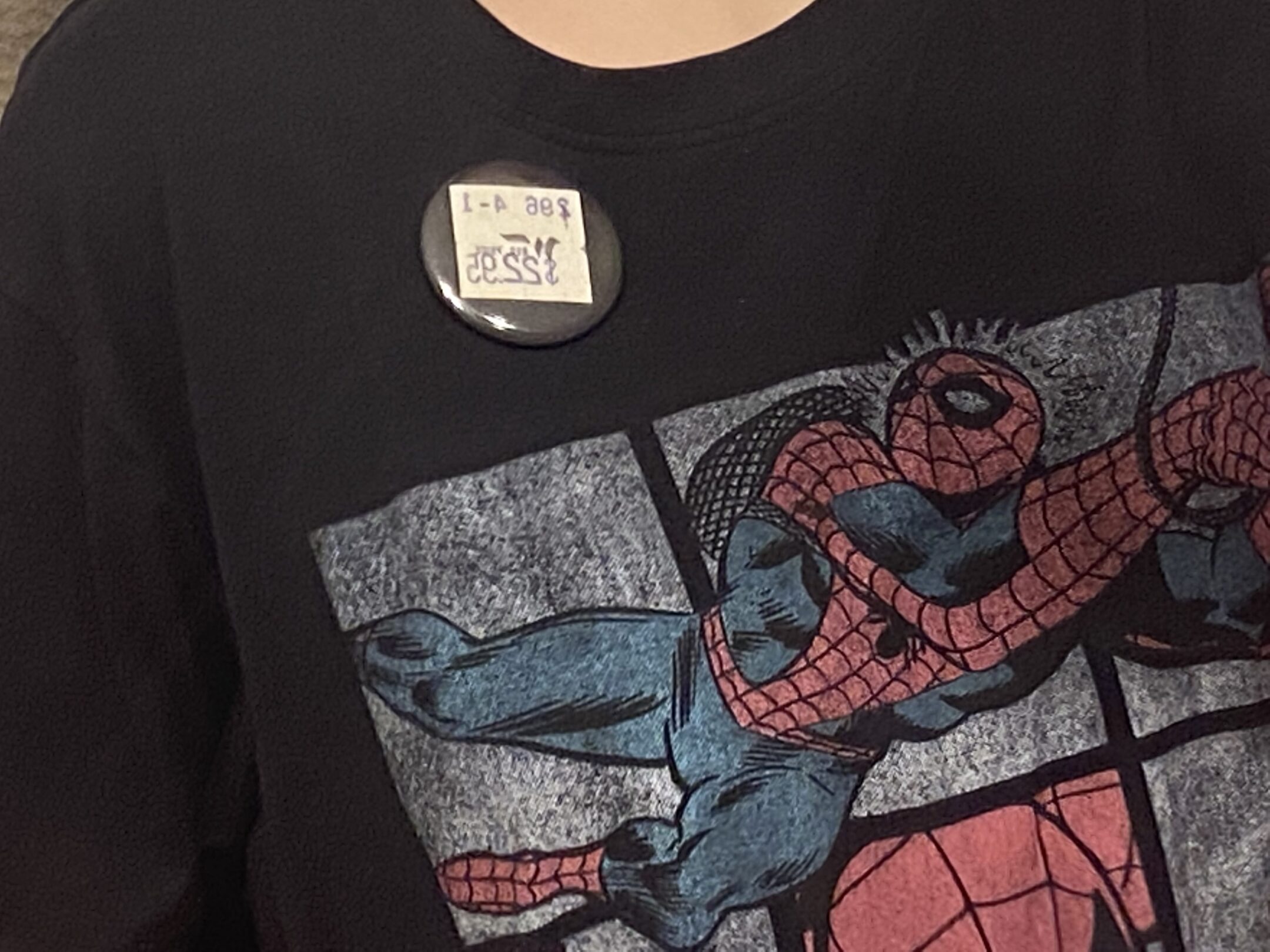
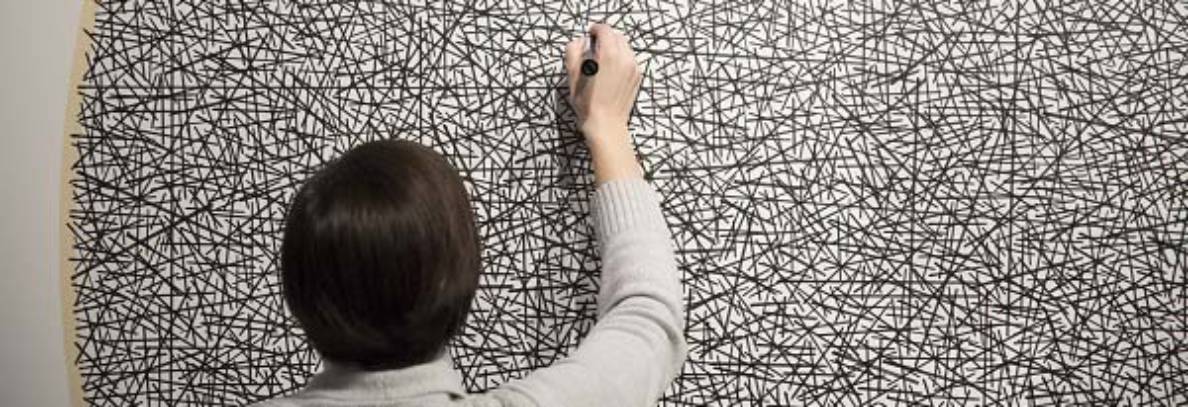
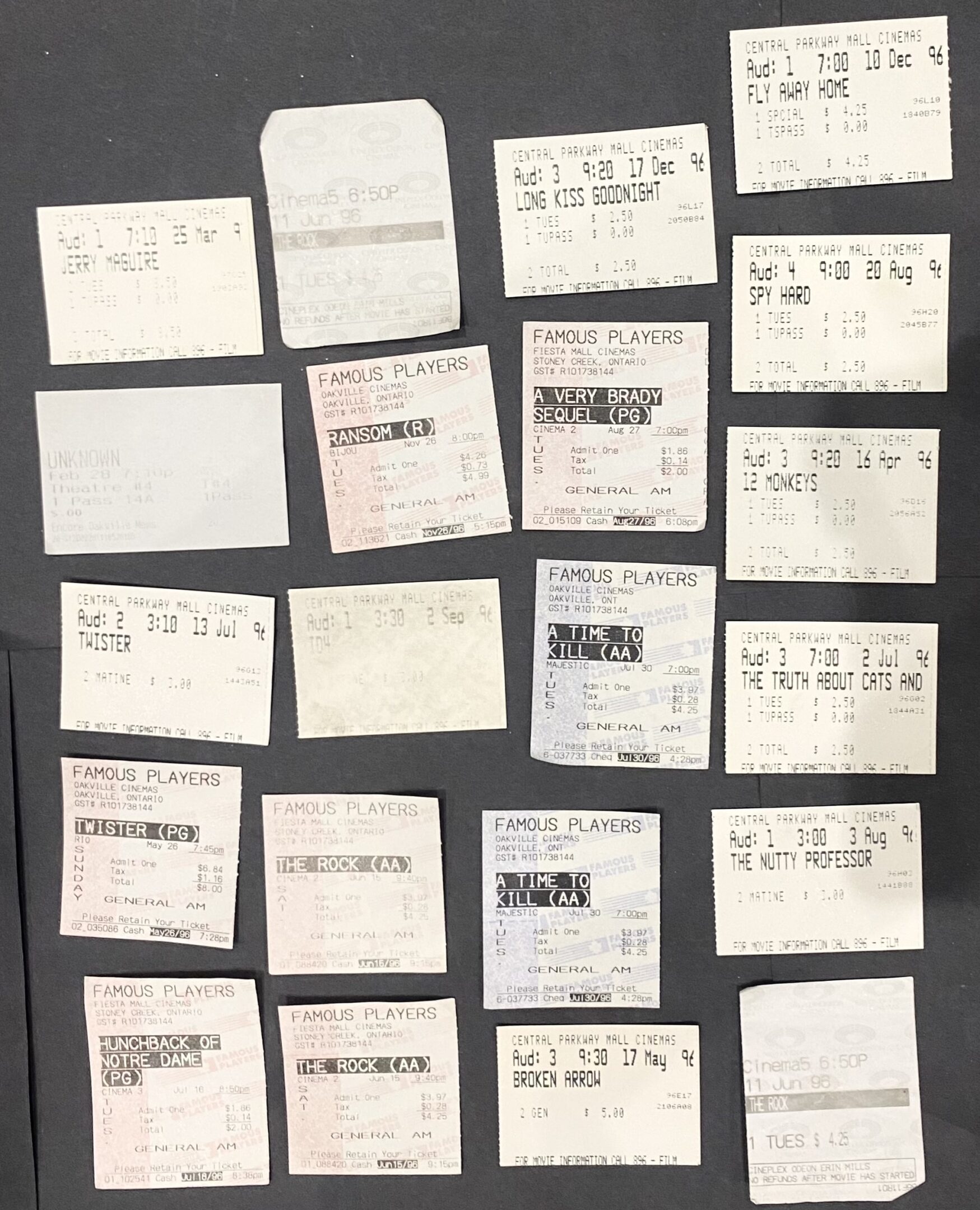
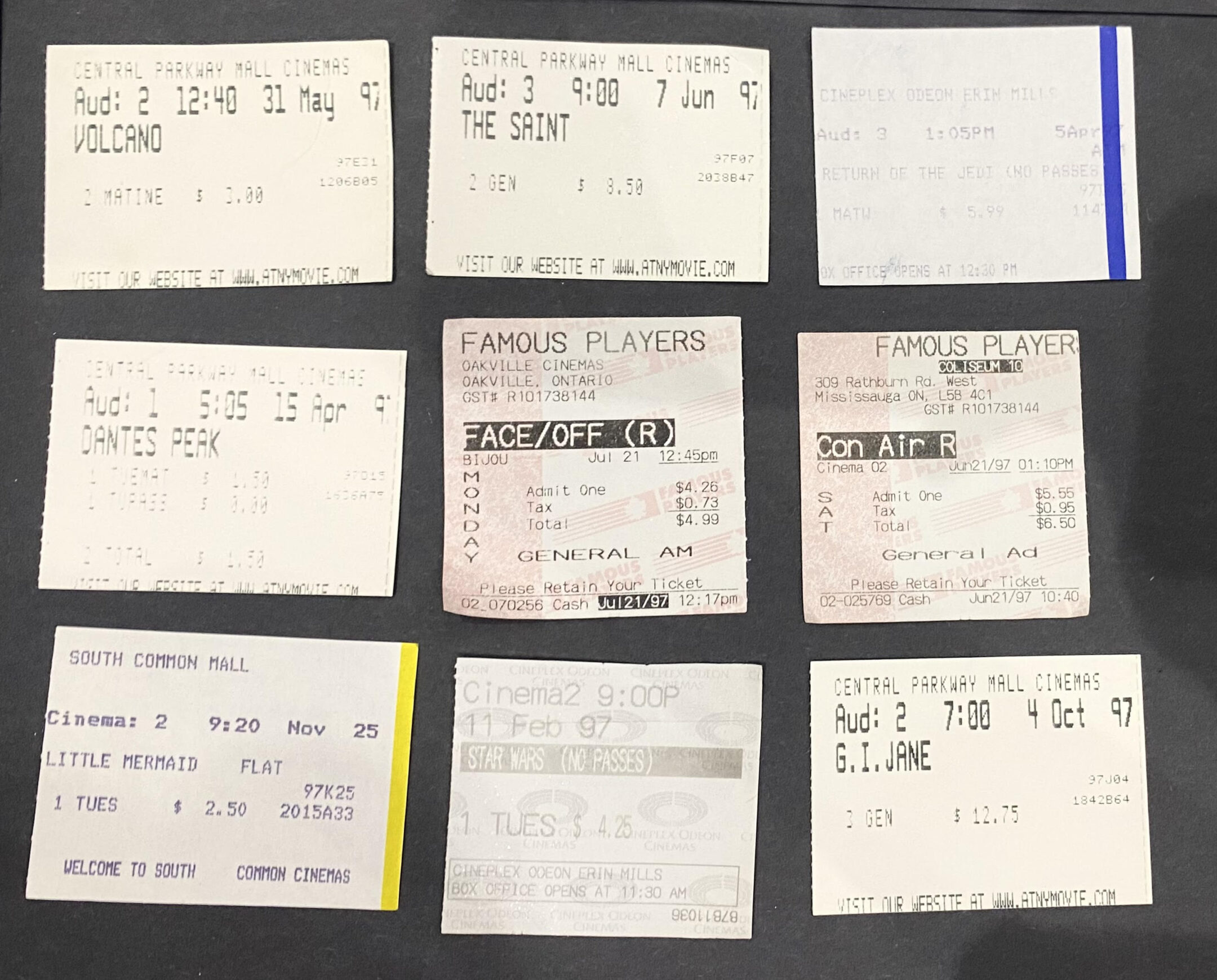
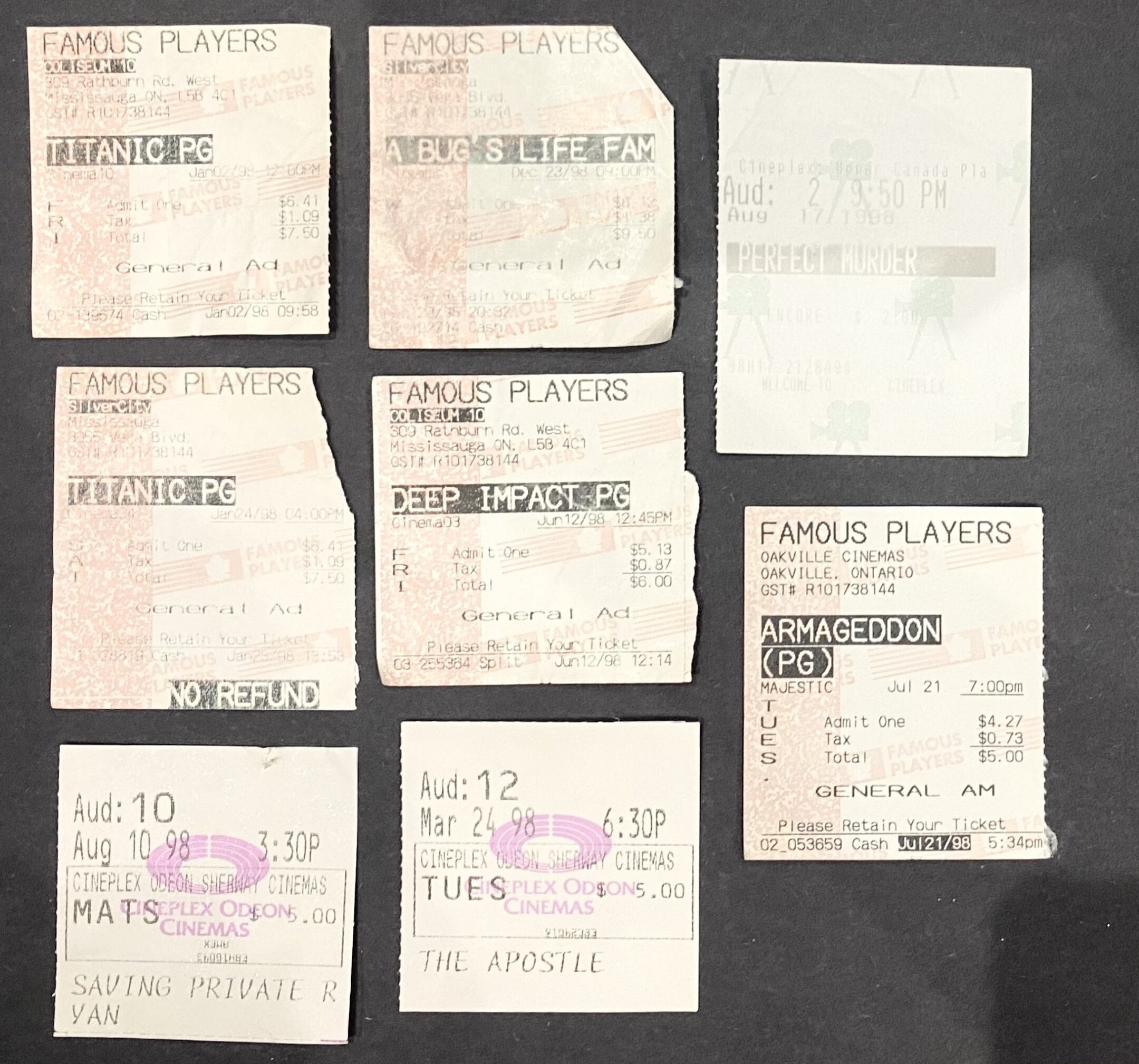
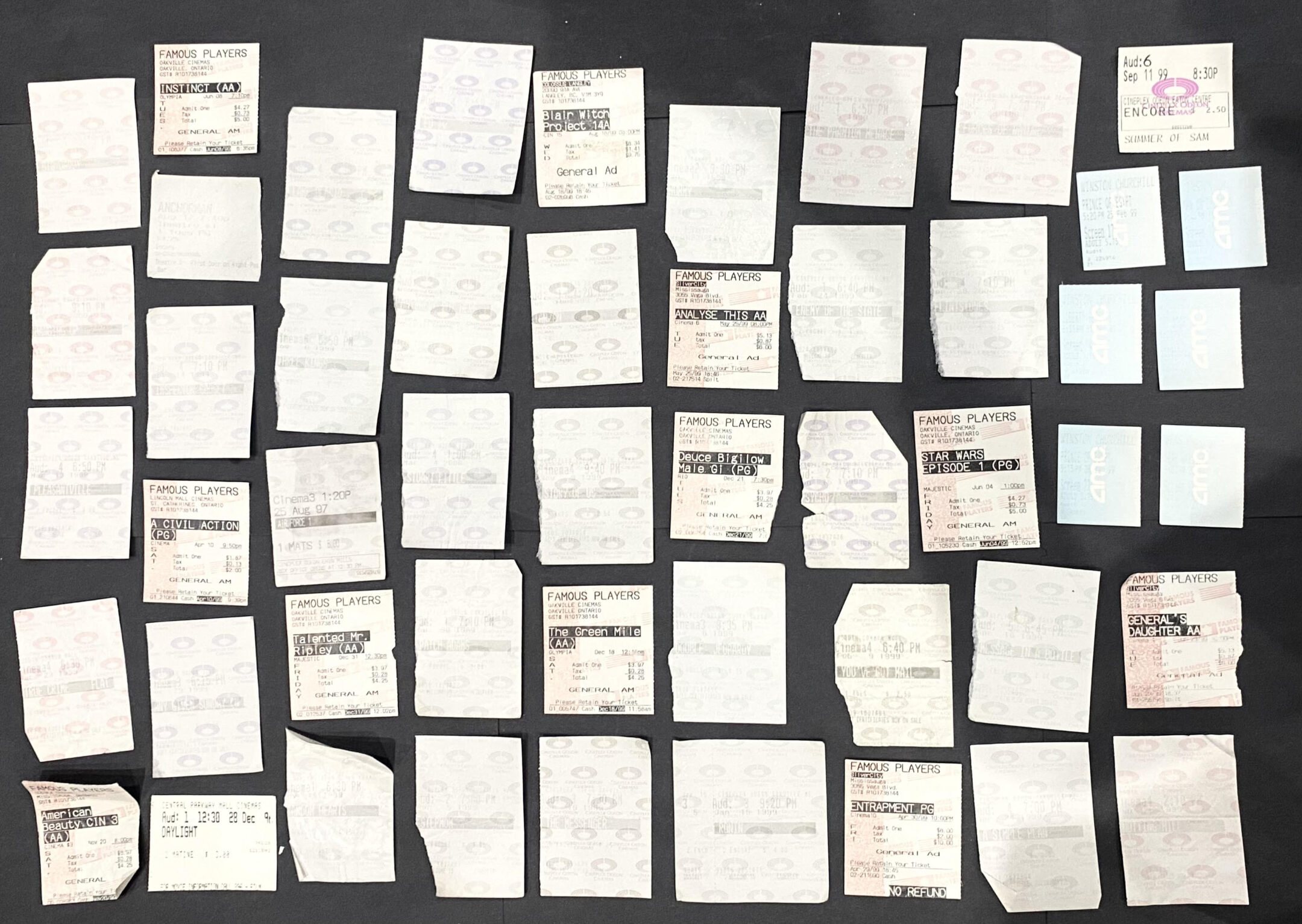
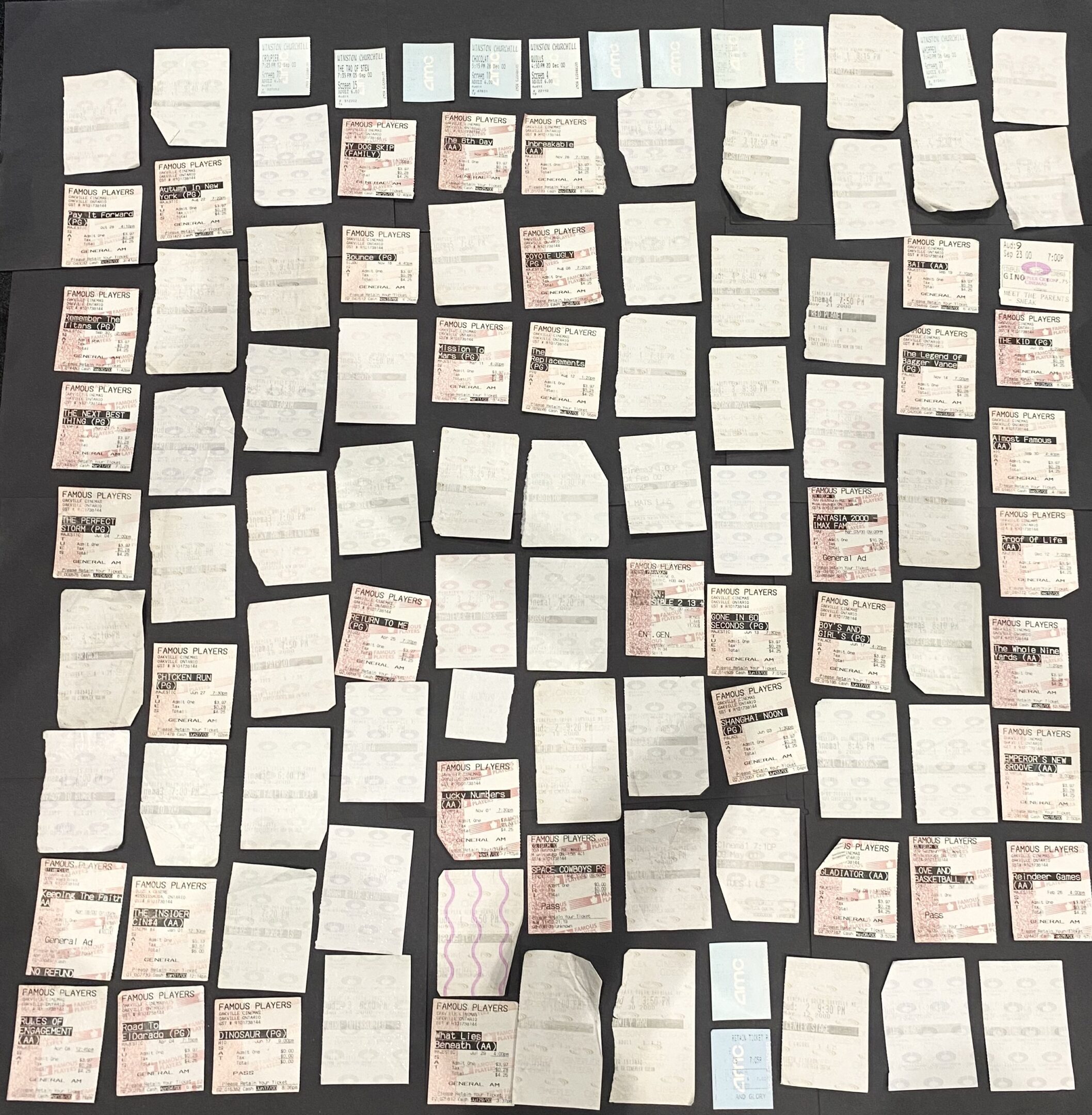
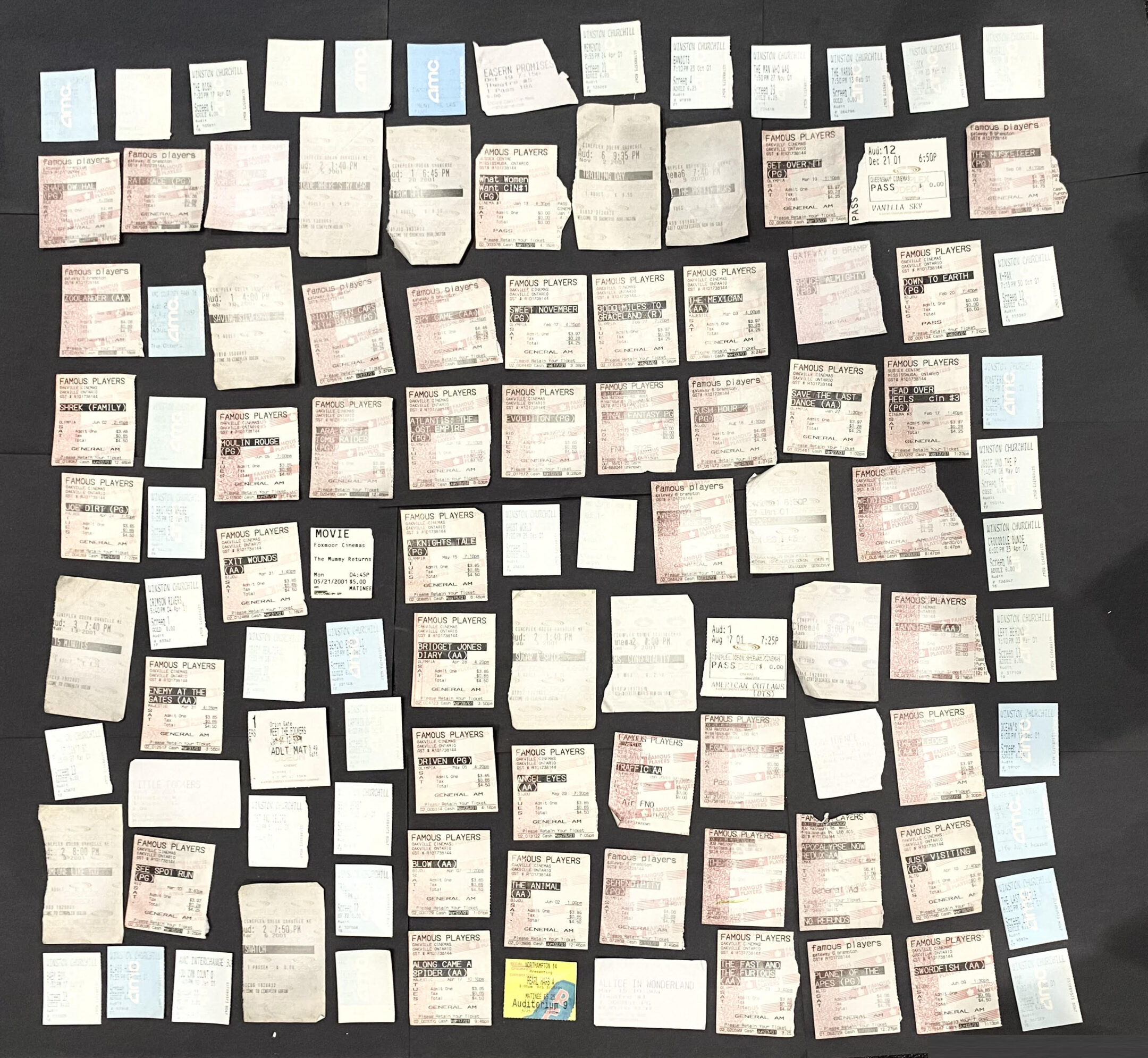
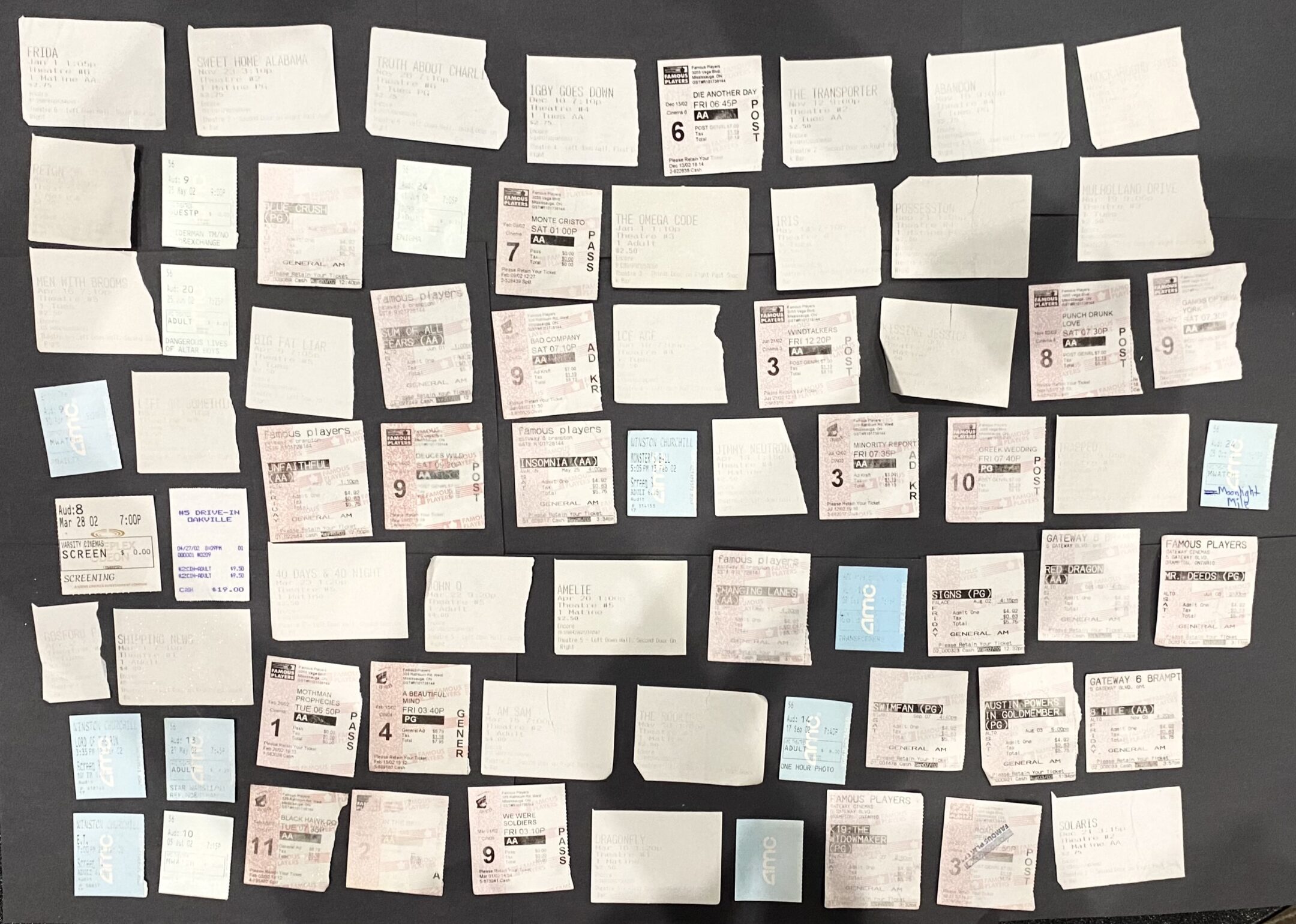
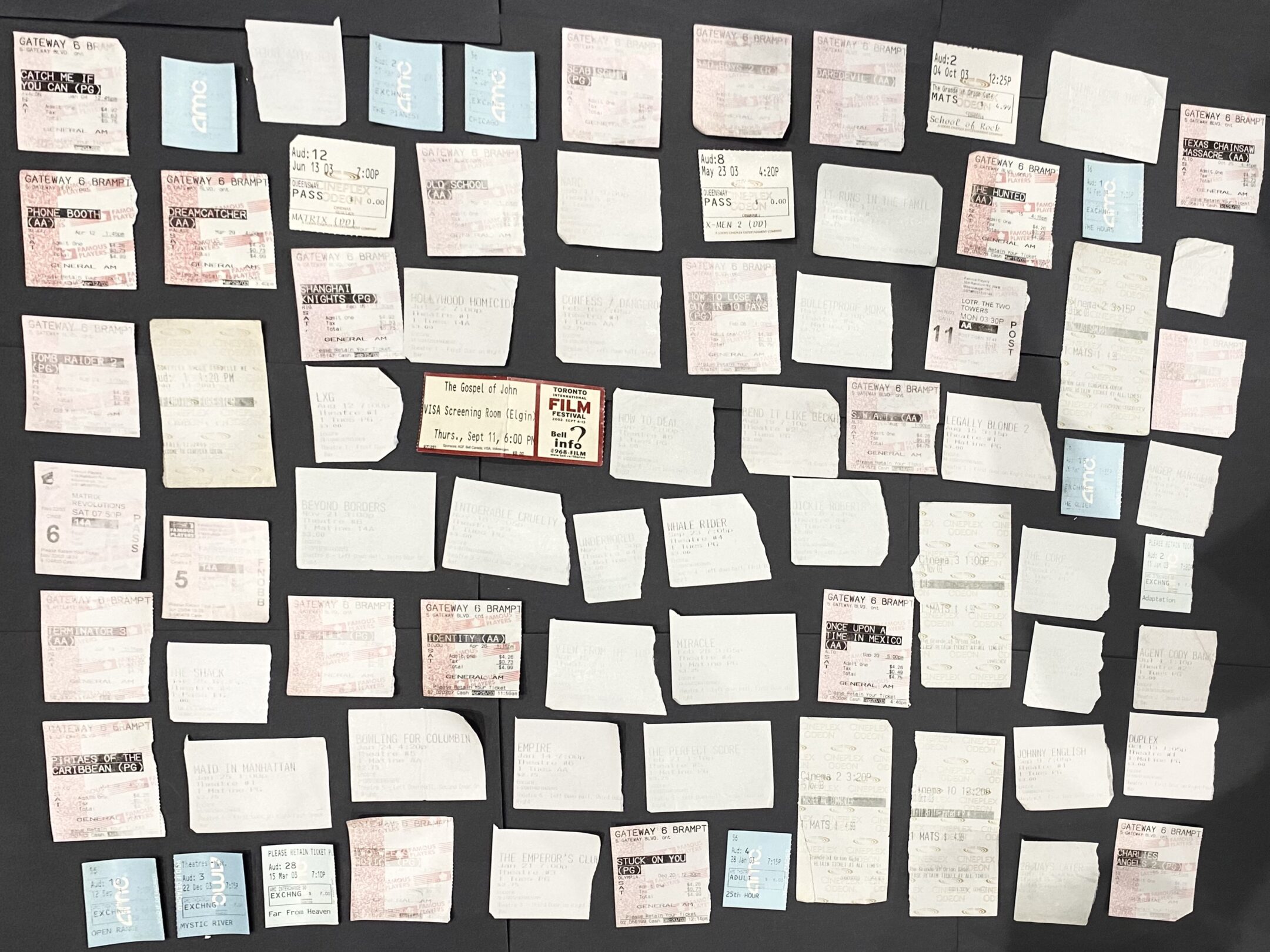
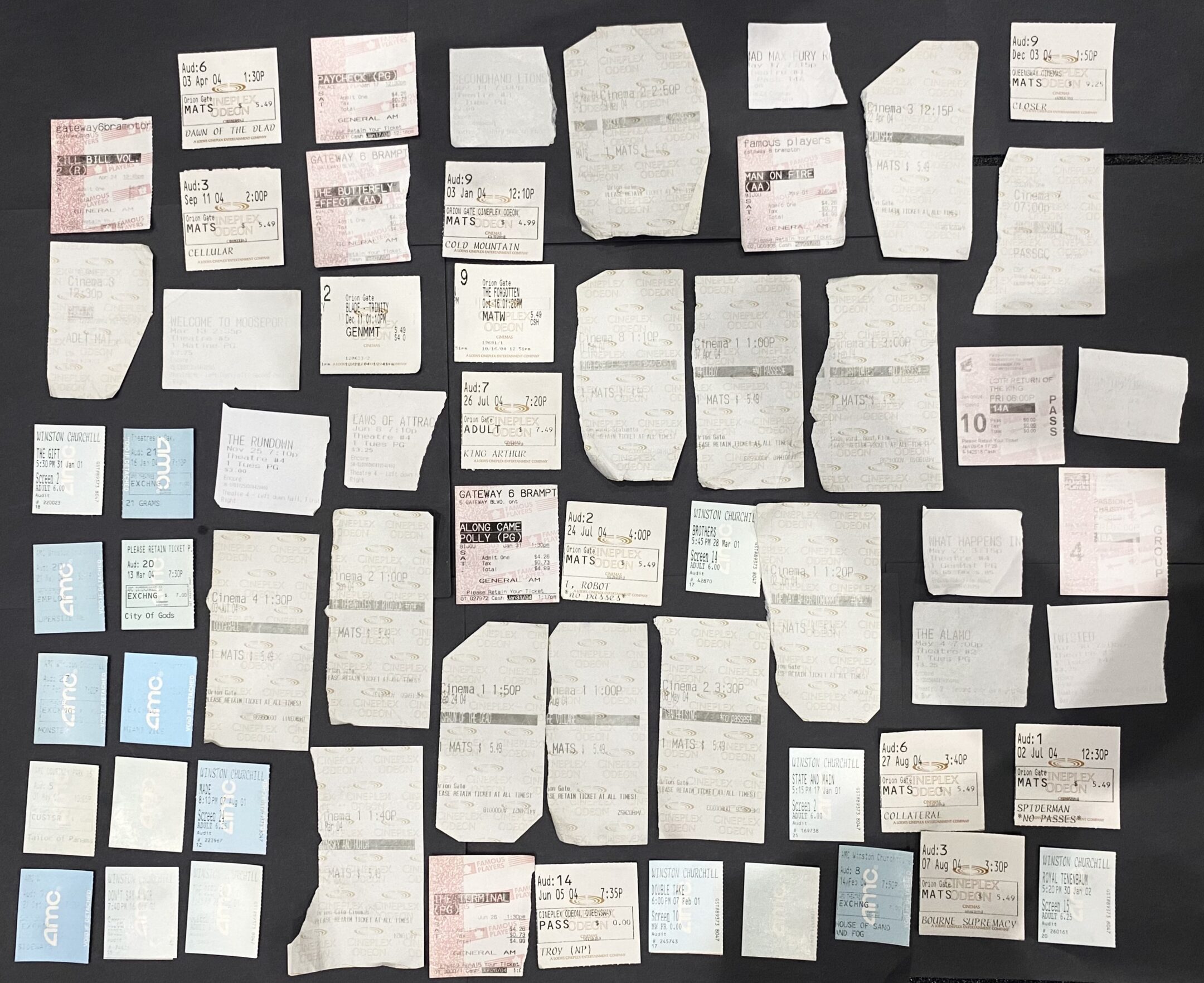
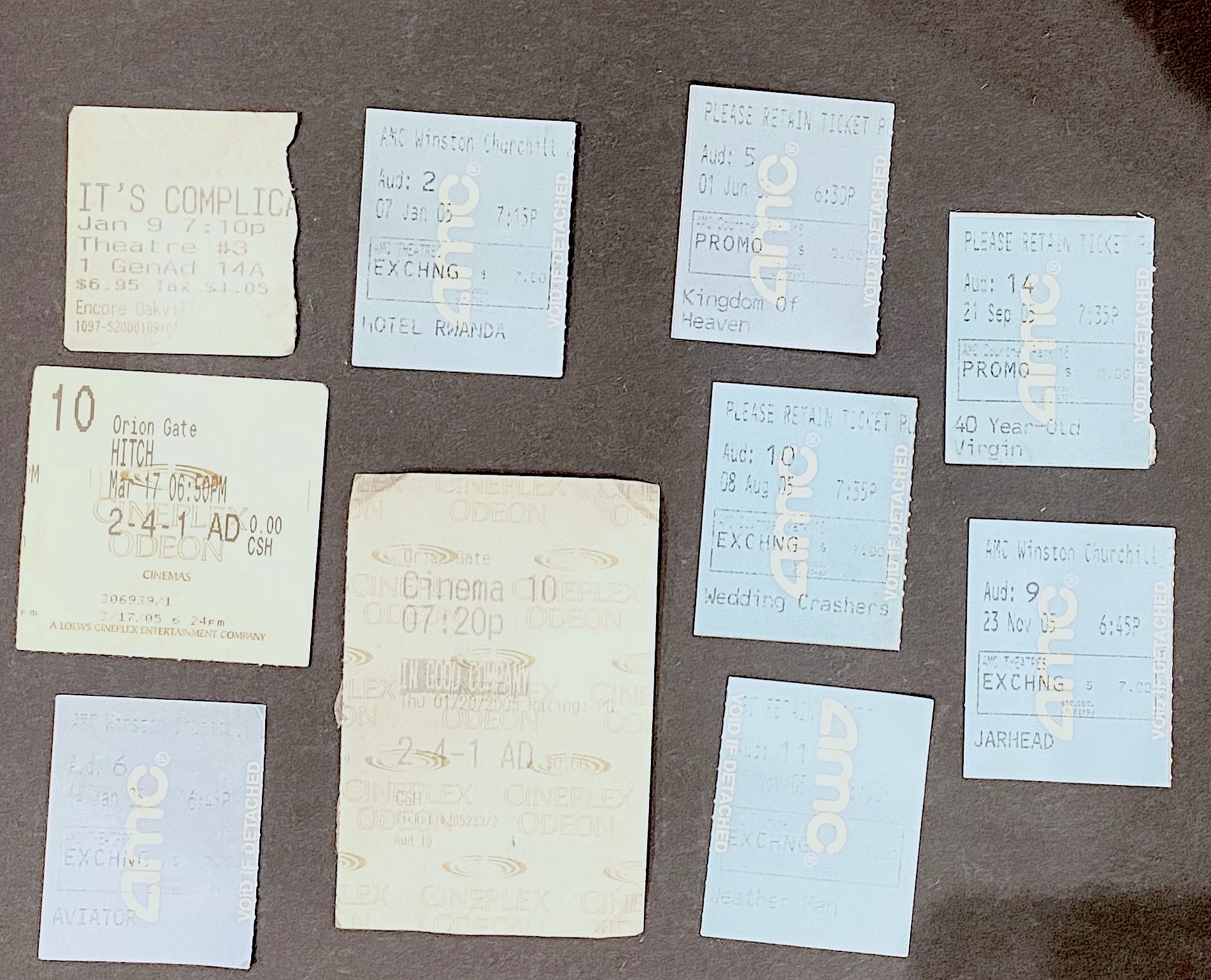
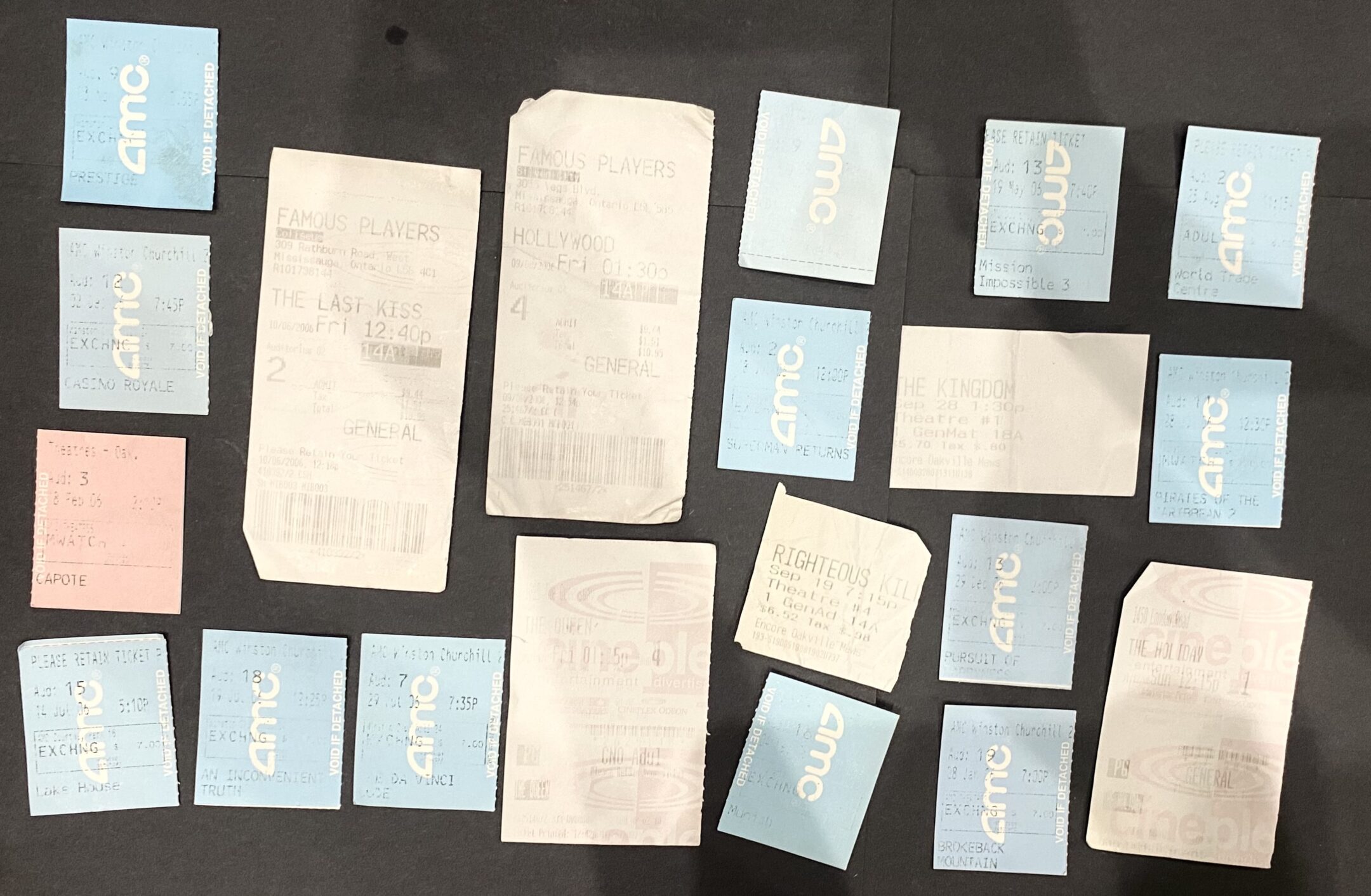
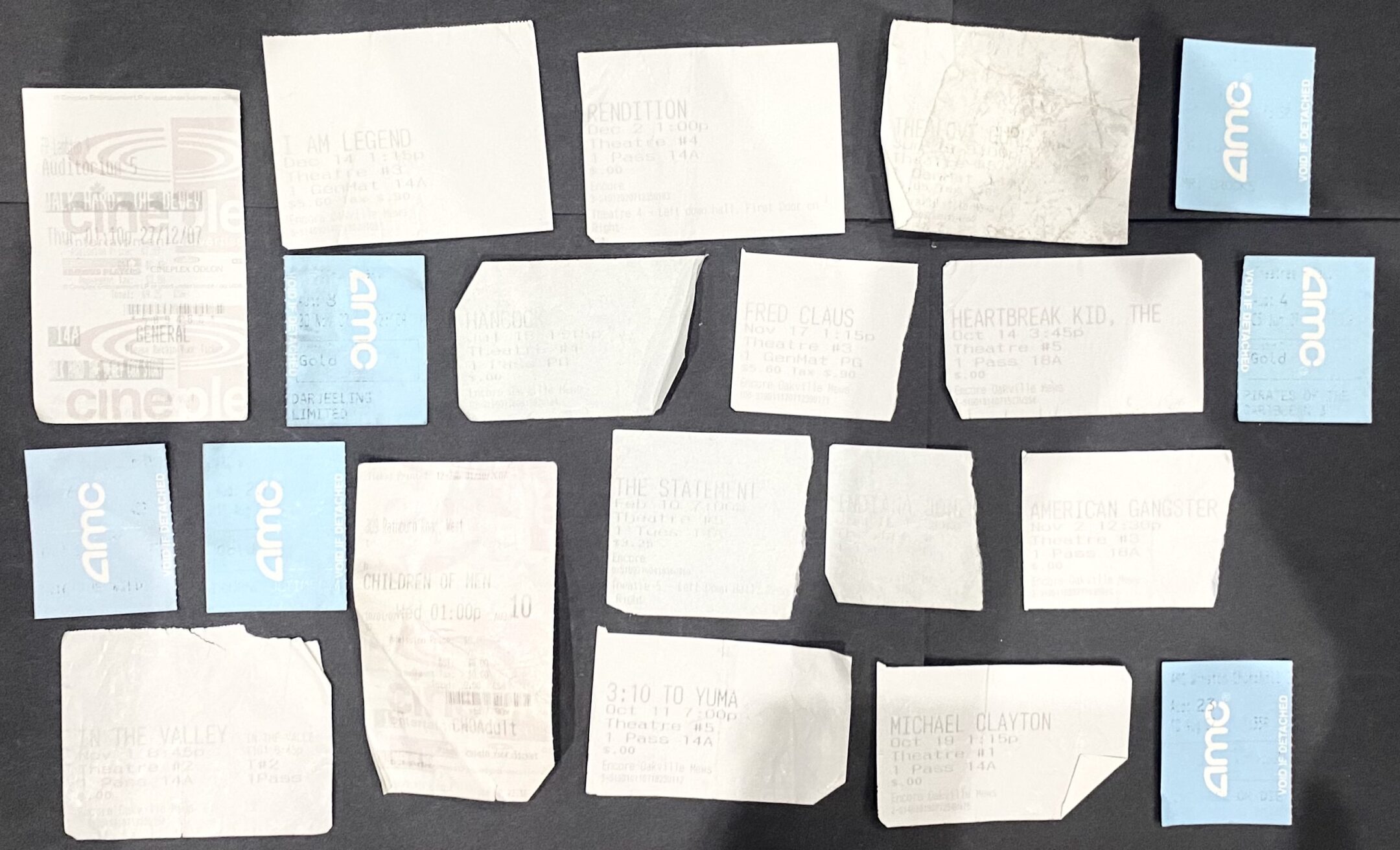
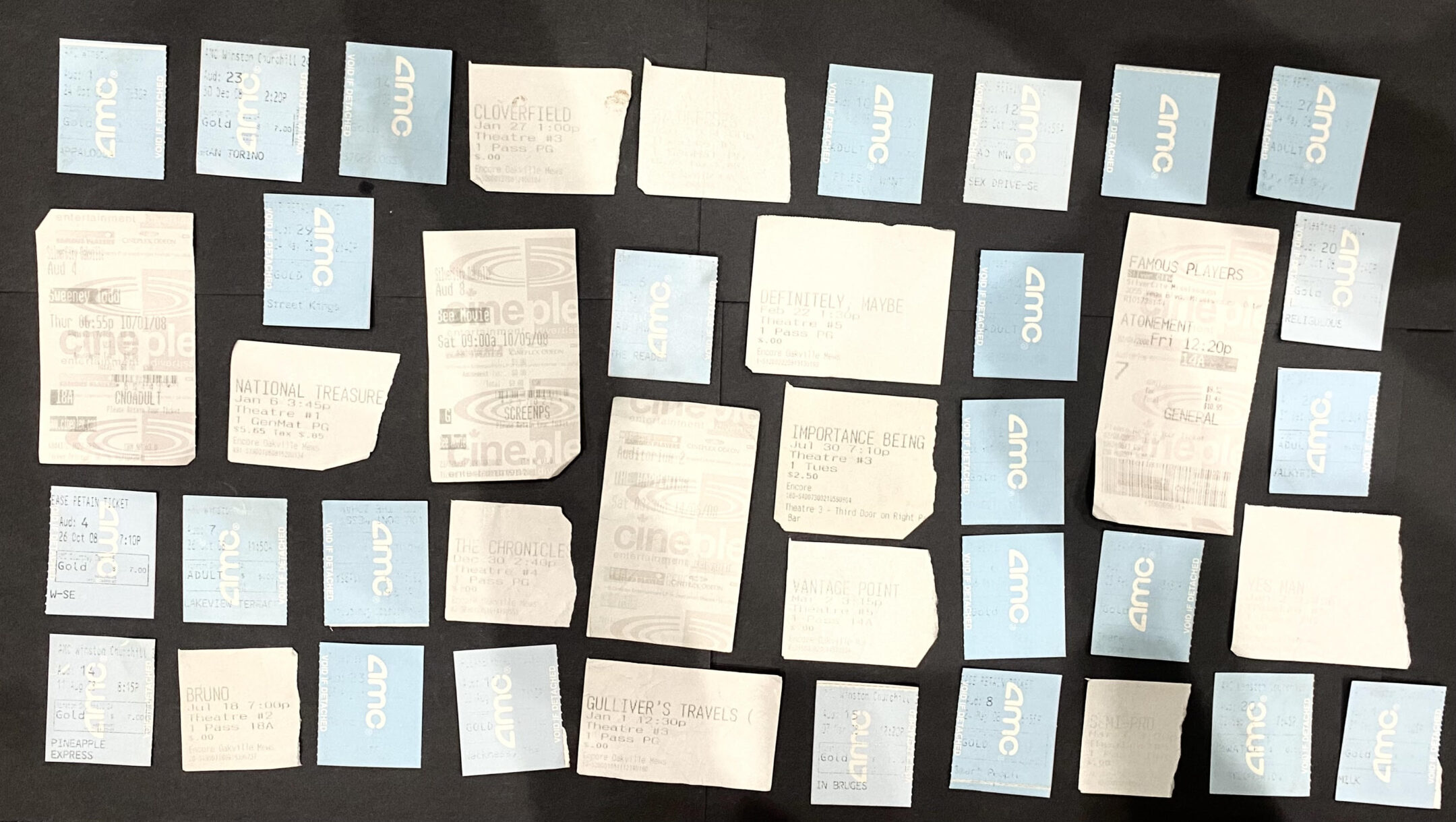
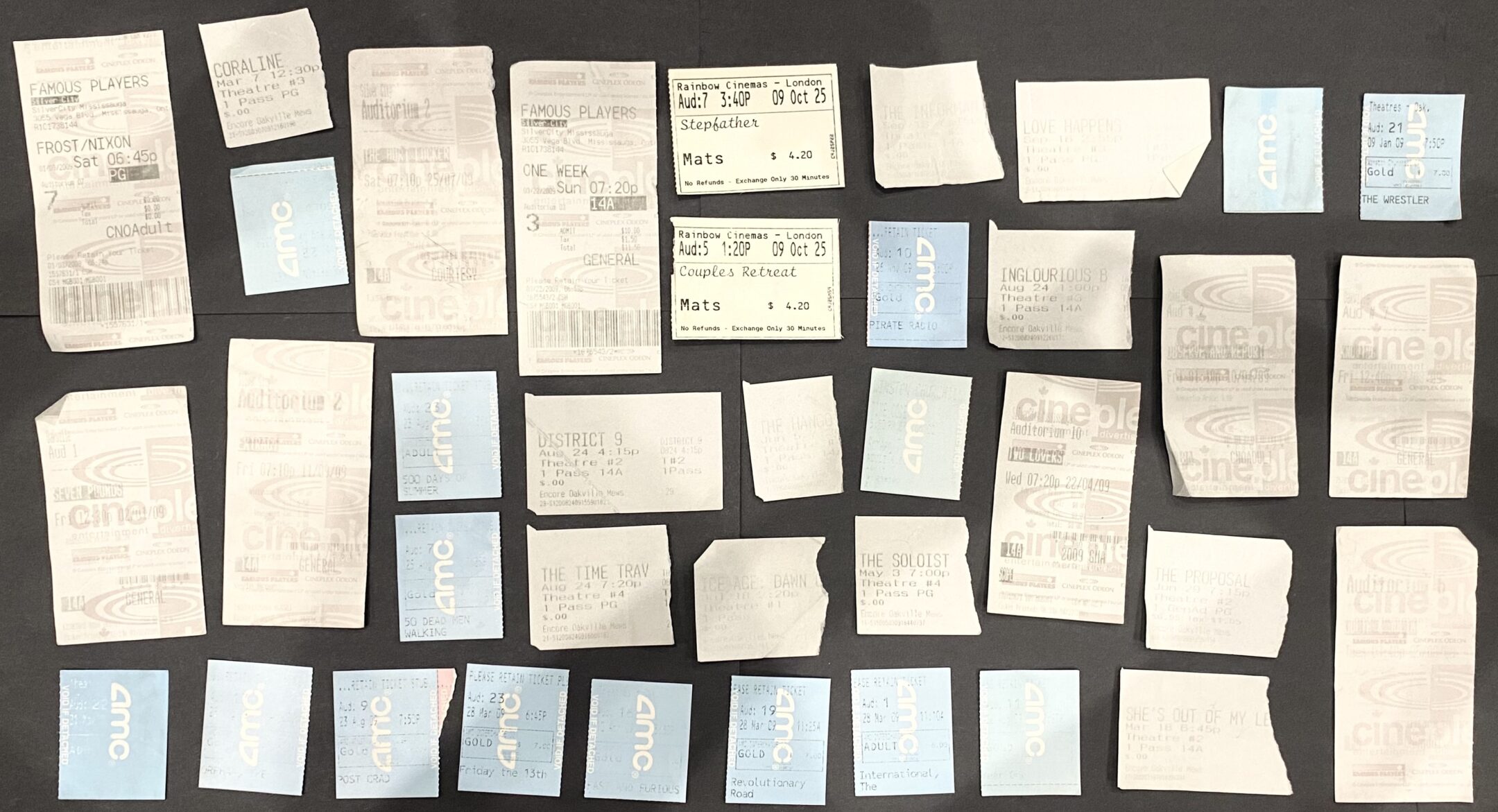
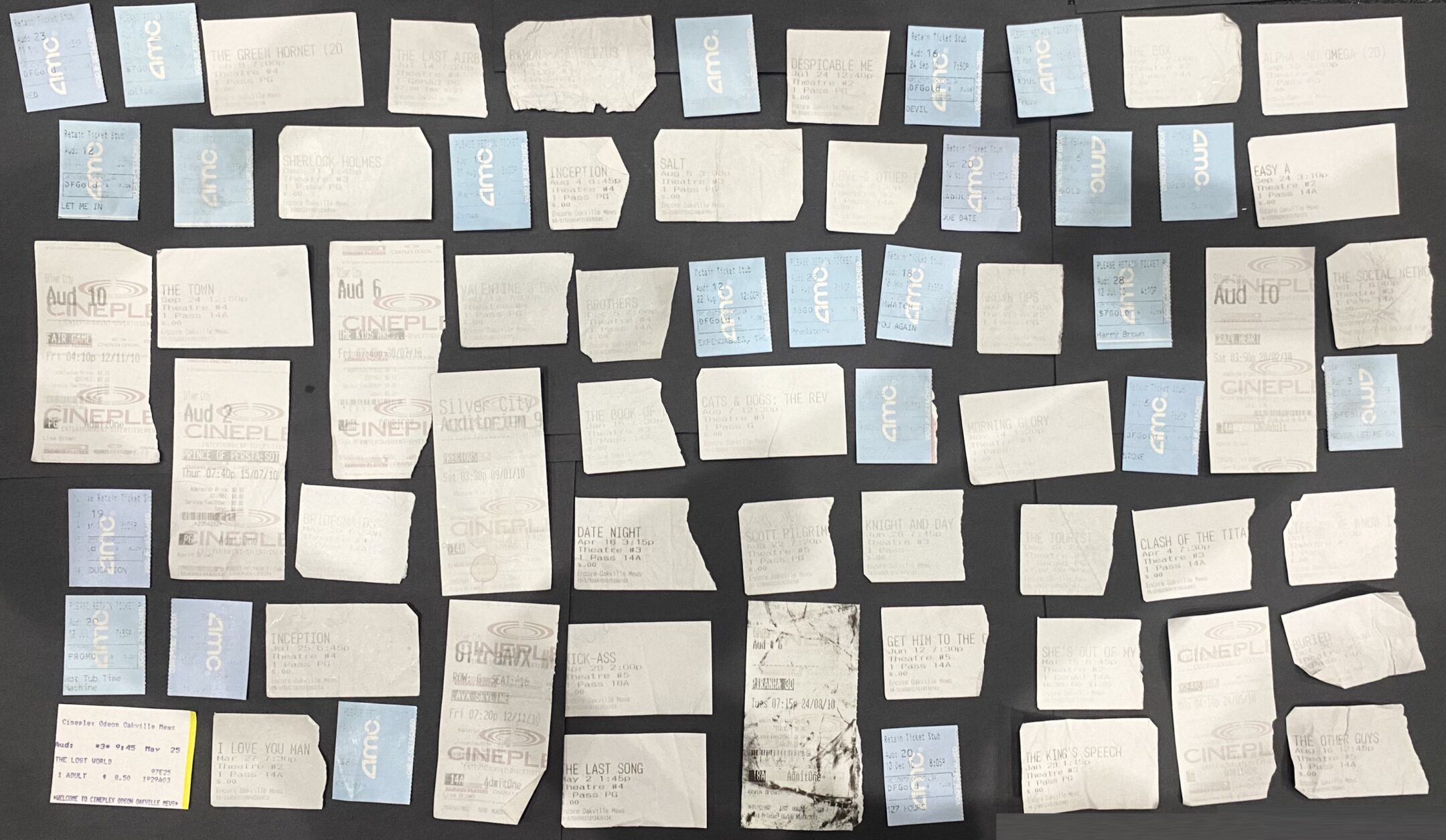
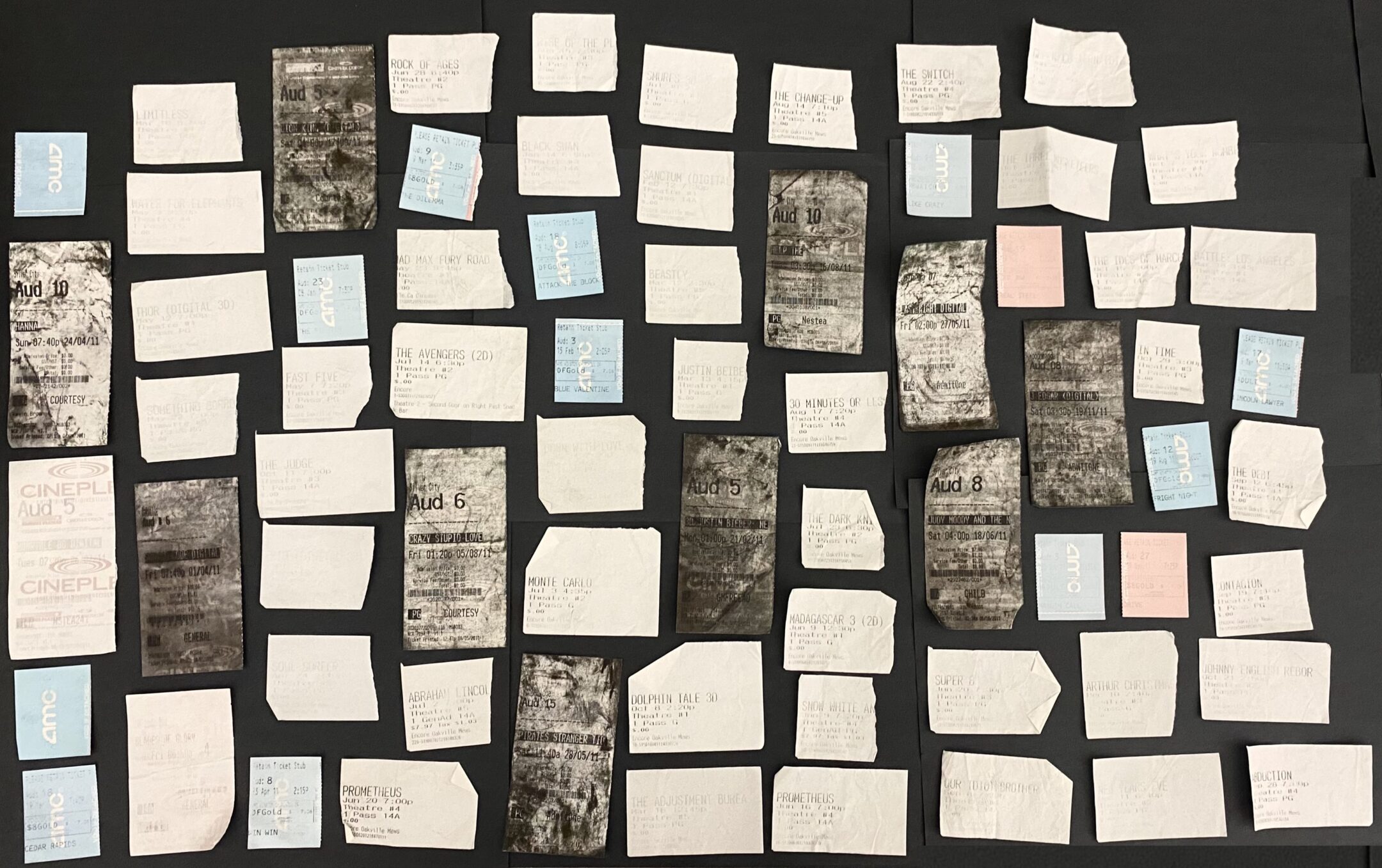
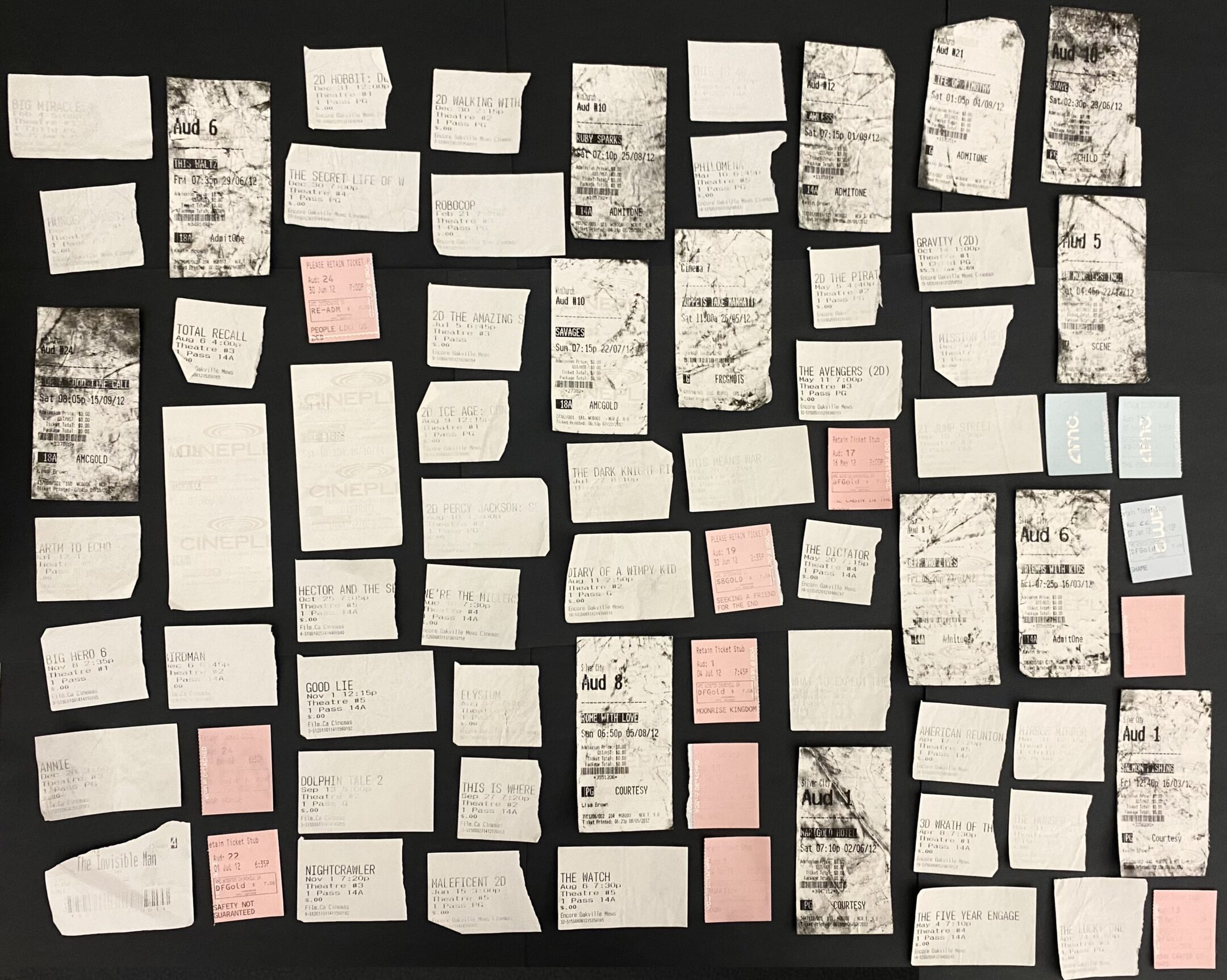
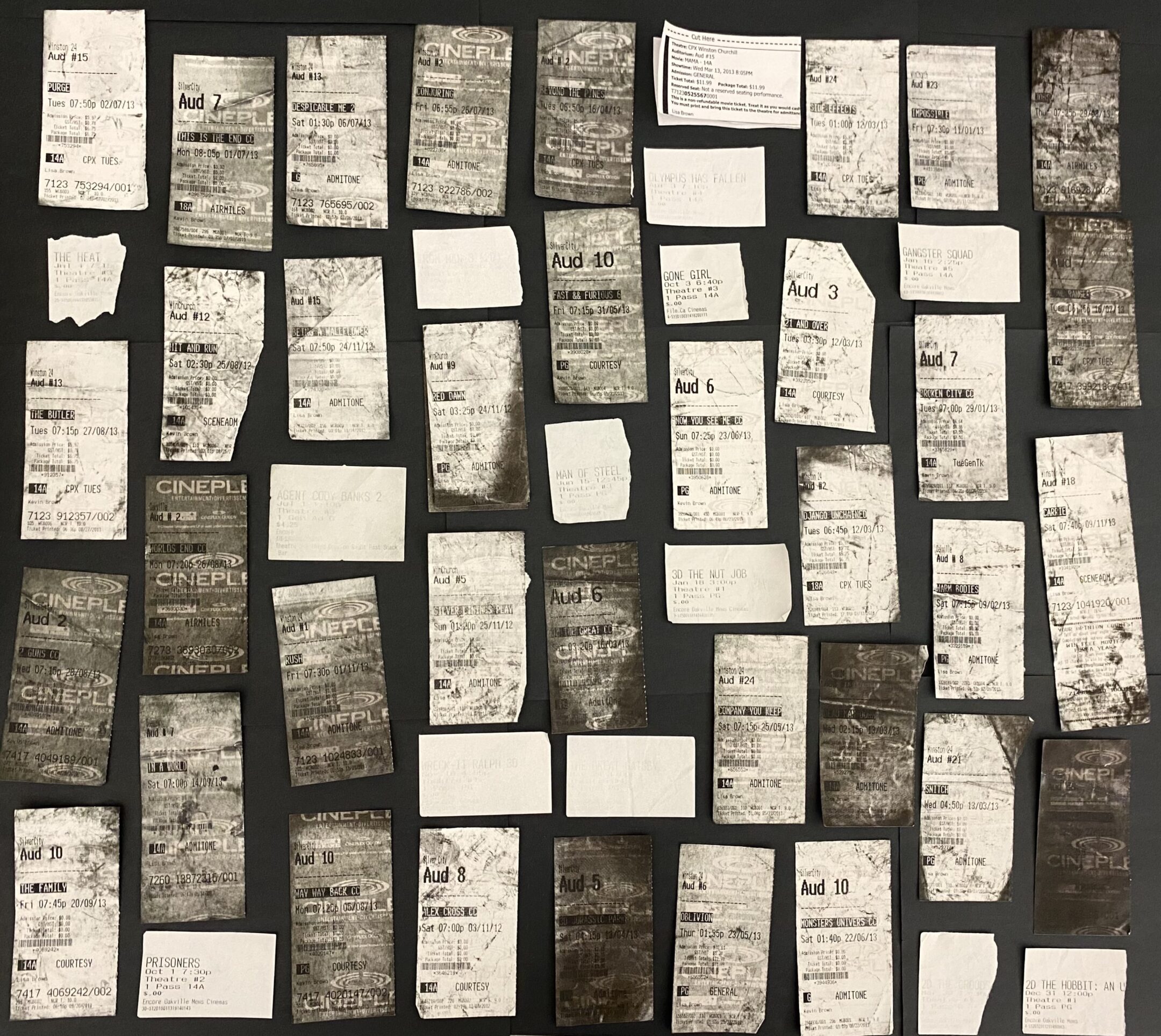
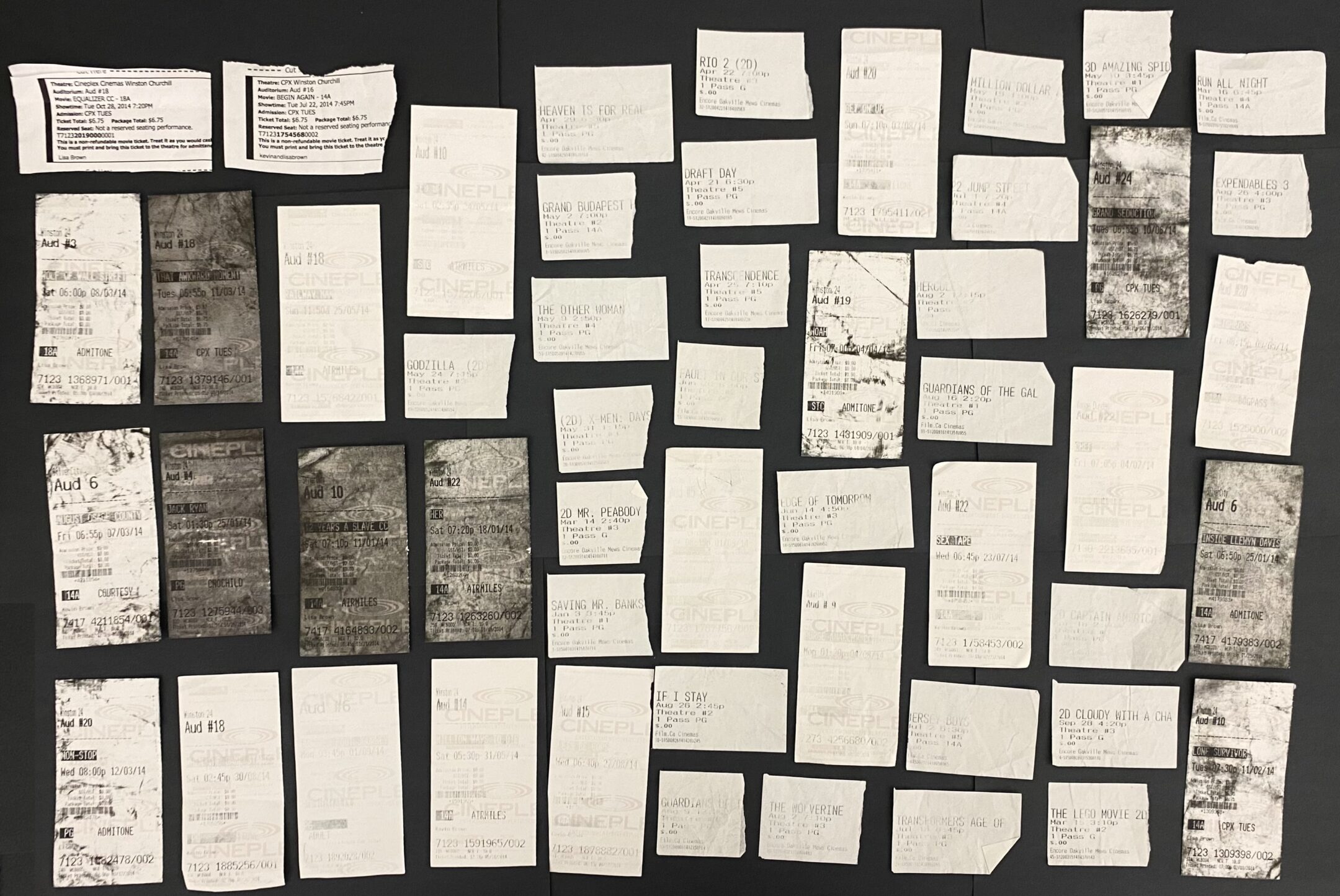
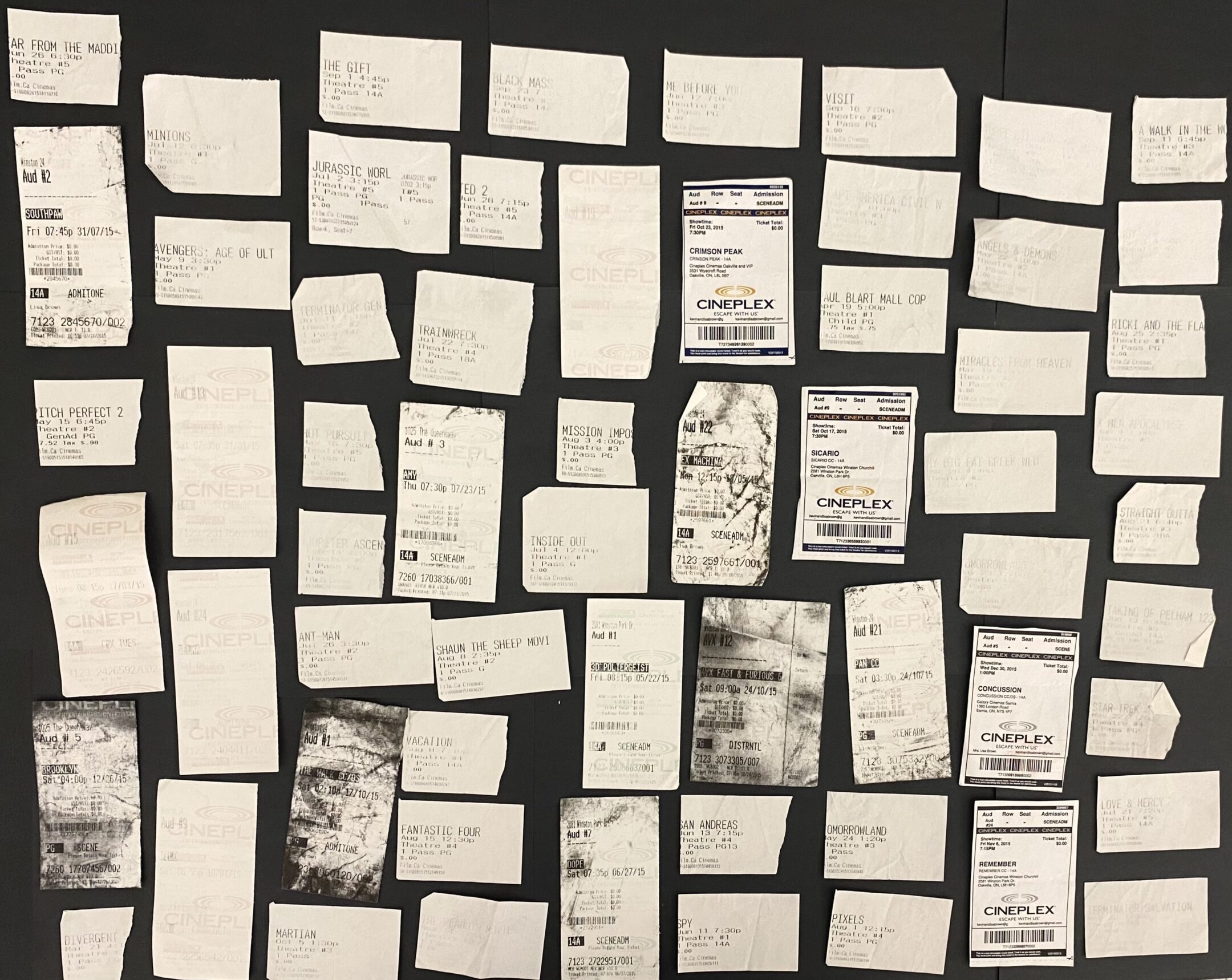

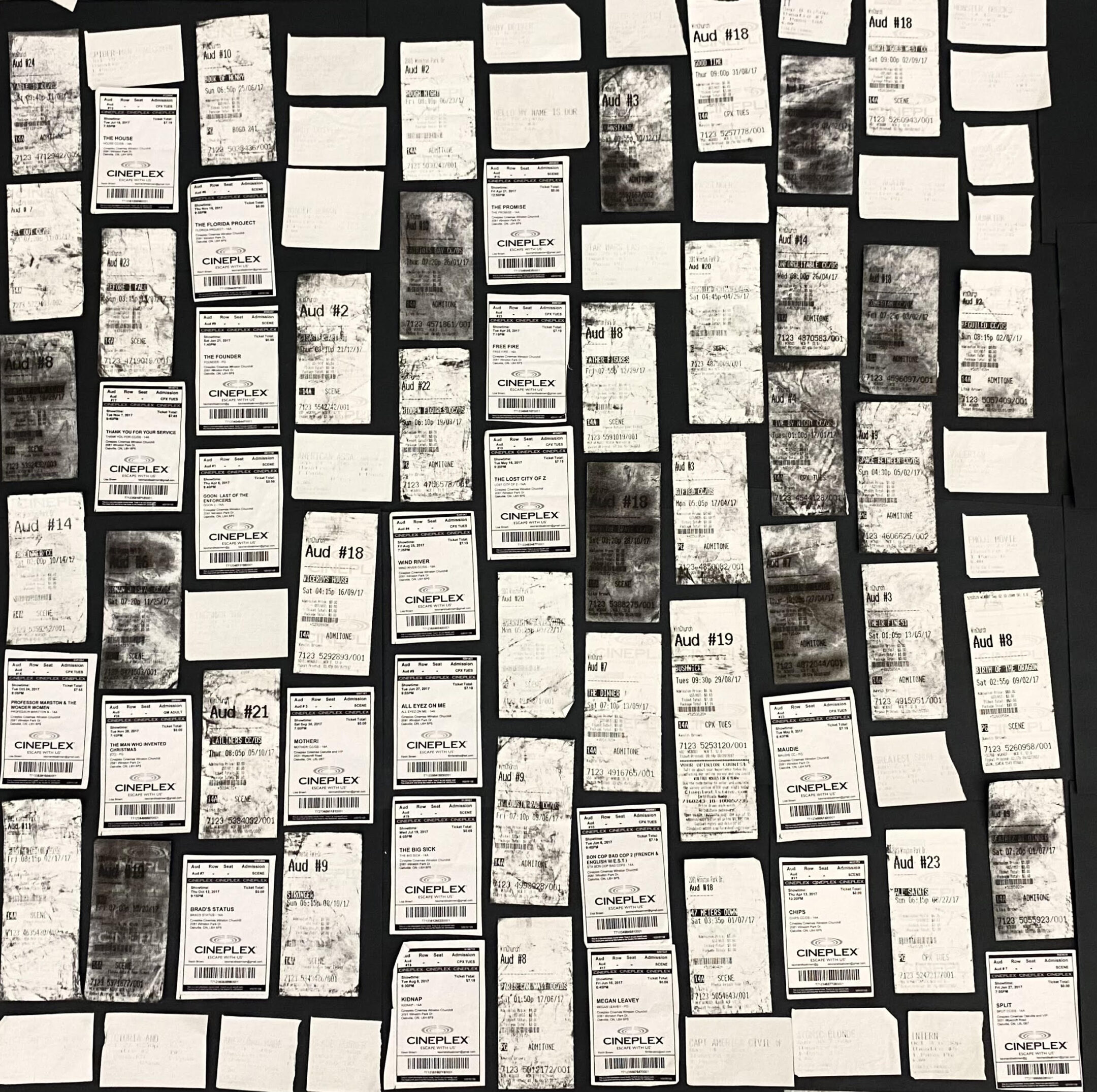


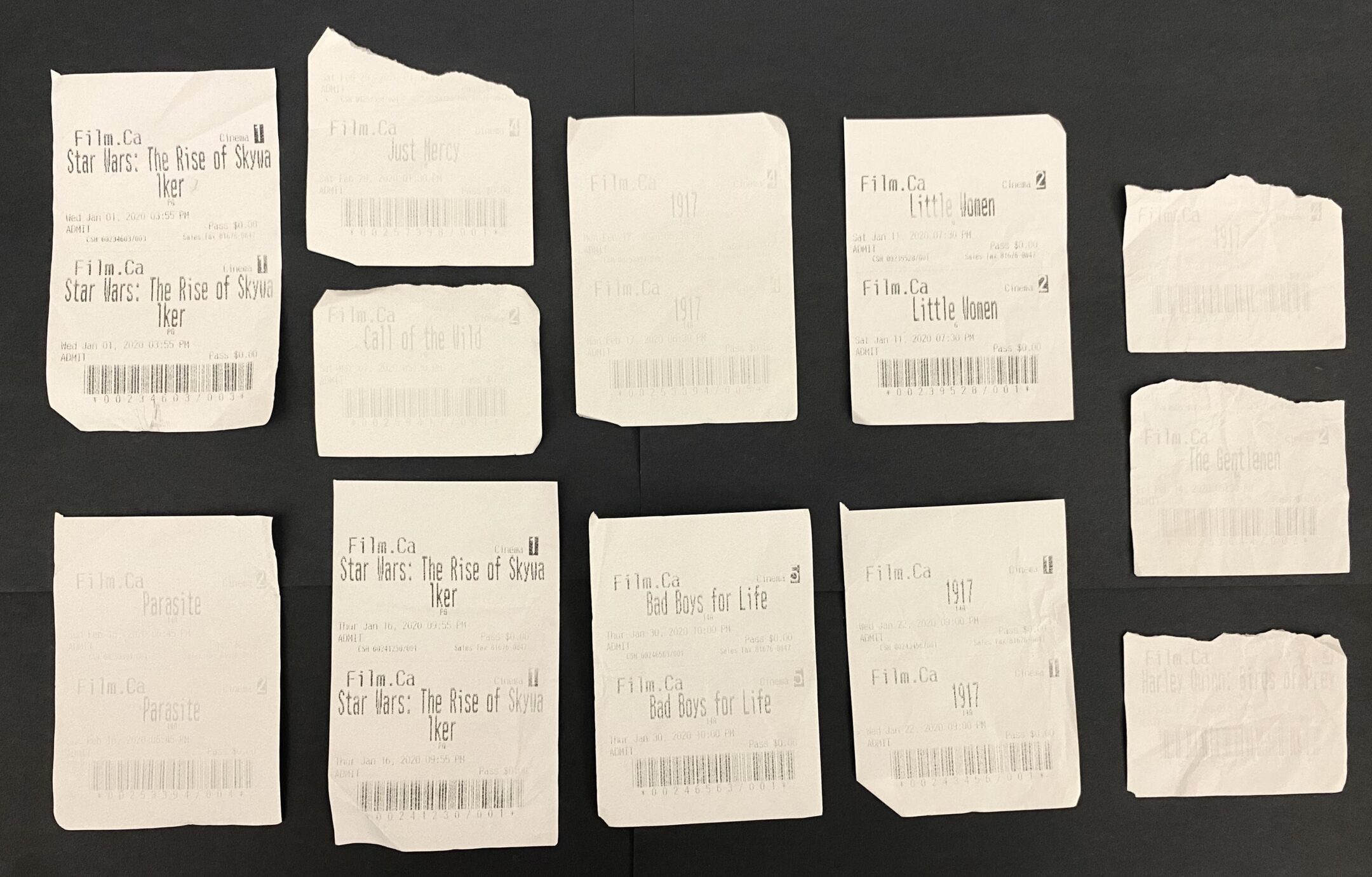
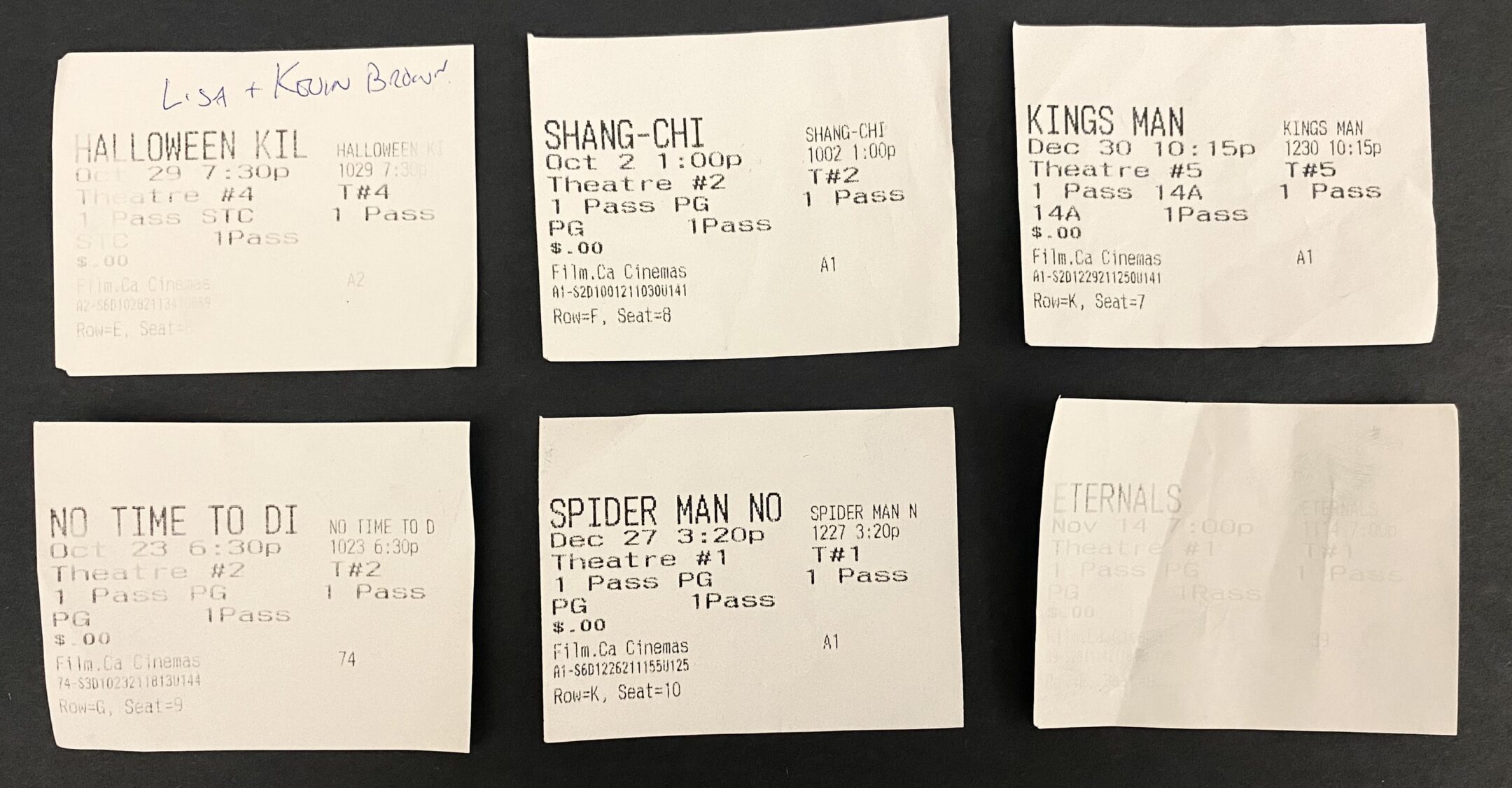
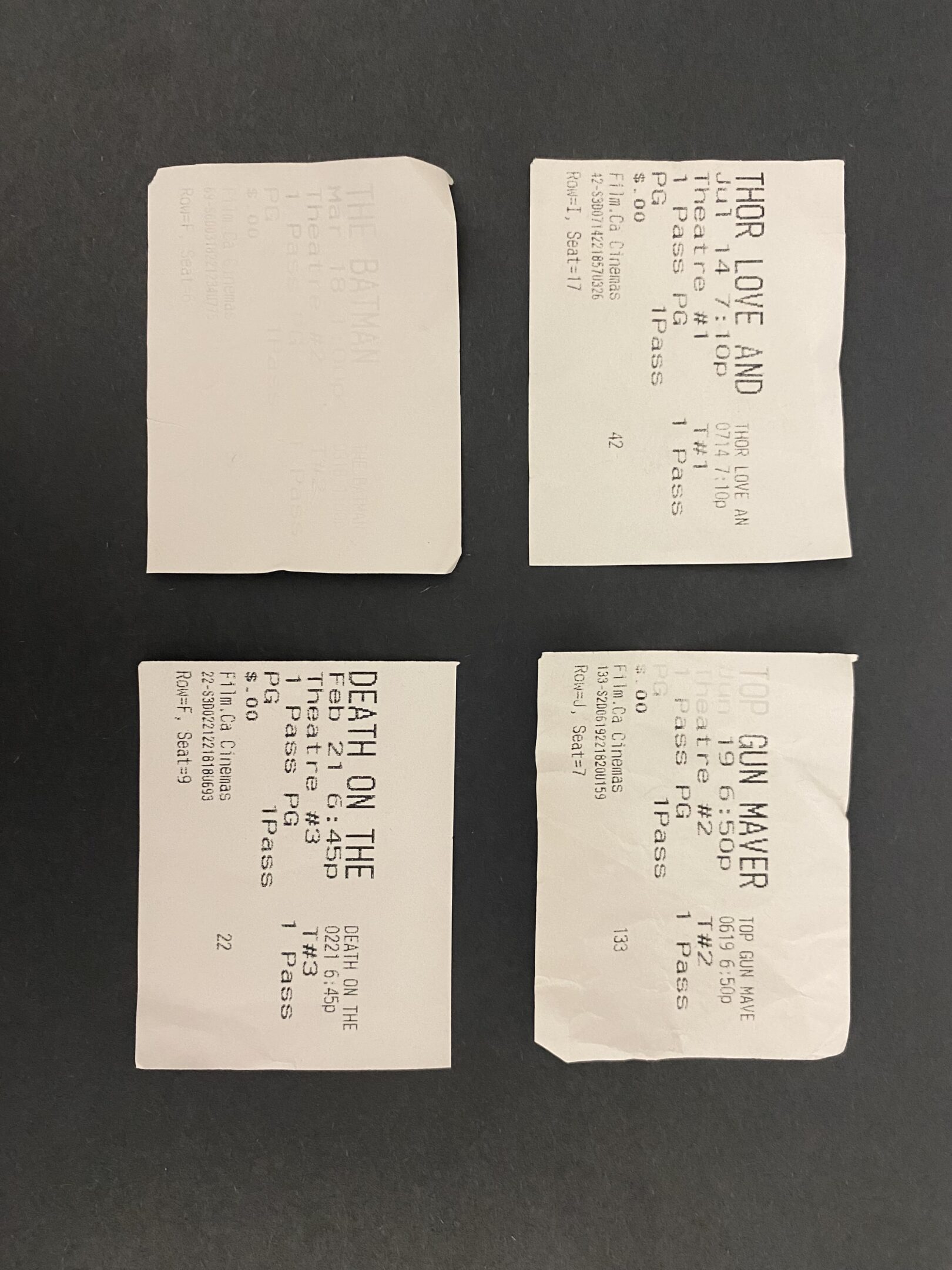
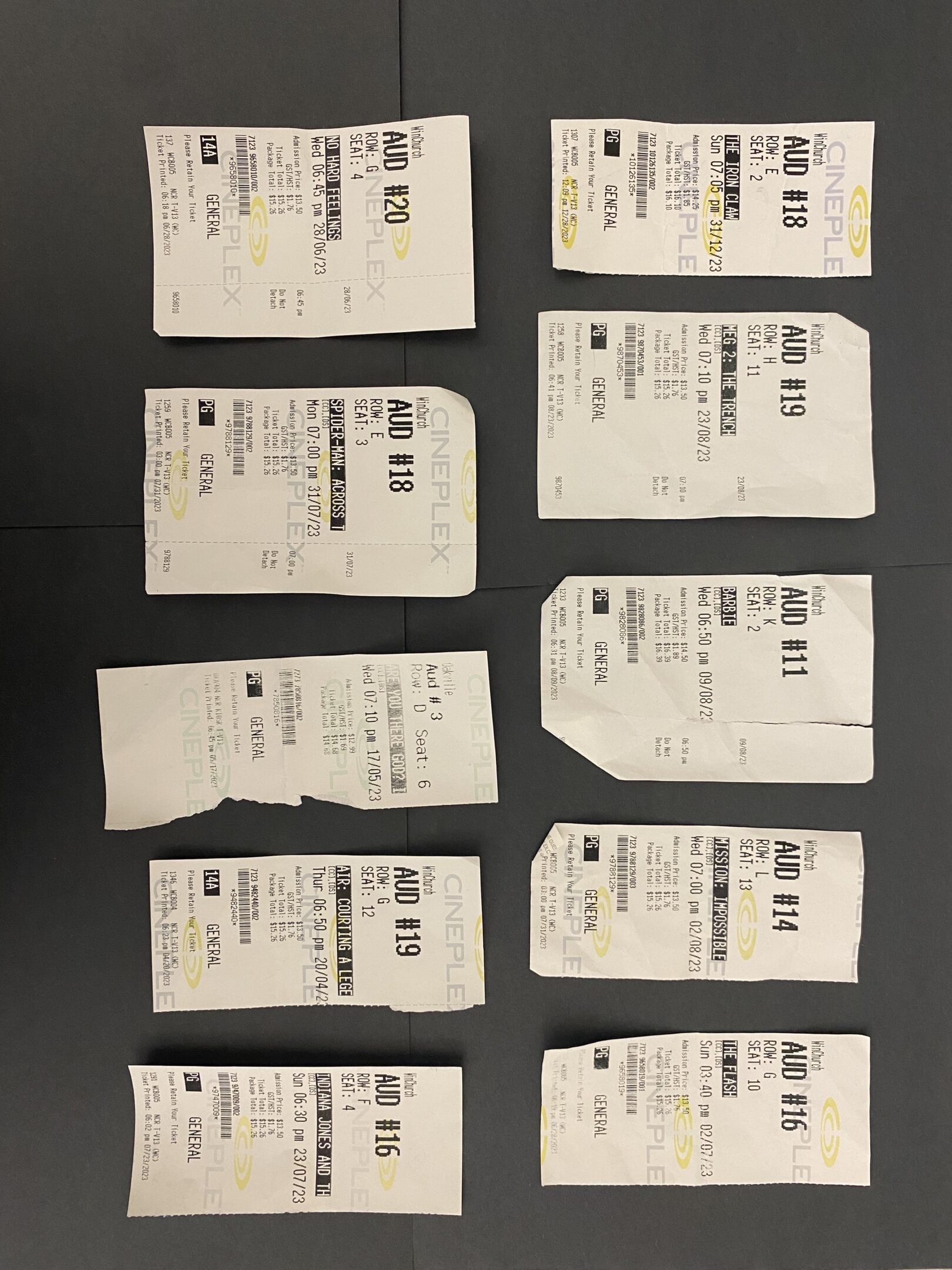

You must be logged in to post a comment.